
Creator of dozens of televisión hits like Chiquititas, Floricienta, Verano del 98 and Rebelde Way, her name is widely known not just in Argentina but also in countries like Israel, Russia or Japan where her productions were a huge success.
Besides her Producer side, in most of her audiovisual creations she was responsible of composing the songs and soundtracks working alongside different musicians. Several of the albums with her songs received awards in Latin America and Argentina, like Latin Grammy and the Gardel Awards.
She also created songs for famous performers of the region like Sergio Denis, Sandra Mihanovic and Xuxa.
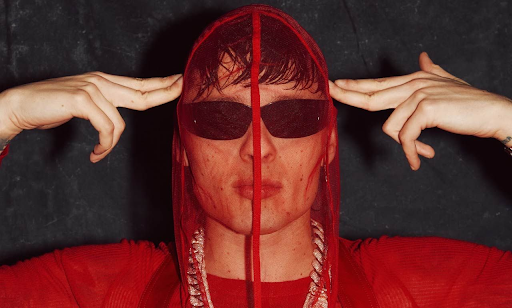
Double P at the Top of Regional Mexican Music
Peso Pluma, whose real name is Hassan Emilio Kabande Laija, has taken the music scene by storm, becoming one of the most listened-to and acclaimed artists in the regional Mexican genre. This young singer and songwriter from Guadalajara, Jalisco, has quickly climbed the charts, capturing a massive audience with his unique style and lyrics that deeply resonate with younger generations.
His music, rooted in regional Mexican and corridos tumbados, is known for blending traditional sounds with modern elements, creating a fresh and original approach. Peso Pluma’s distinctive voice—gritty and powerful—perfectly complements the melodies of his songs, which often touch on themes such as love, heartbreak, street life, and Mexican culture. His lyrics, straightforward and at times controversial, connect strongly with listeners who see their own experiences reflected in his storytelling.
Hits like “Ella Baila Sola,” “PRC,” and “La Bebé” have become anthems for an entire generation, racking up millions of streams on digital platforms and dominating international charts. His 2023 album “Génesis” is a clear testament to his versatility and talent, exploring different subgenres within regional Mexican music and solidifying his place as one of the most innovative artists of the moment.
Beyond his undeniable musical talent, Peso Pluma has crafted a distinctive image and style that set him apart from others in the genre. His aesthetic—merging urban culture with Mexican tradition—has struck a chord with young audiences, turning him into a fashion icon and a cultural reference point for an entire region.

Known as the lead vocalist of the bachata group Aventura, and later embarked in soloist proyects, Romeo’s real name is “Anthony”: he decided to go under the name Romeo, as an alter ego, a more romantic versión on stage and also to help him overcome his shyness.
The group Aventura was formed by Romeo, his cousin Henry Santos, Lenny Santos and Max Santos, both of whom, despite having the same surname are only Friends from Romeo and Henry. They became immensely popular during their origin in the 90’s, blending bachata with elements of hip-hop, R&B, and pop, and achieving international success with hits like “Obsesión,” “Mi Corazoncito,” and “Dile al Amor”.
In 2011, Romeo embarked on a solo career, releasing his debut album “Formula, Vol. 1,” which featured collaborations with artists such as Usher, Lil Wayne, and Pitbull. The album was a commercial success and helped solidify Santos’ status as a solo artist. He followed up with “Formula, Vol. 2” in 2014, which included hit singles like “Propuesta Indecente” and “Odio” featuring Drake.
Known for his smooth vocals, romantic lyrics, and charismatic stage presence, Santos has become one of the most prominent figures in Latin music. His music often explores themes of love, heartbreak, and relationships, resonating with audiences worldwide.
In addition to his music career, Santos has ventured into acting, appearing in films such as “Furious 7” and “Angry Birds 2.” He continues to release music and tour internationally, maintaining his position as one of the top Latin artists of his generation.
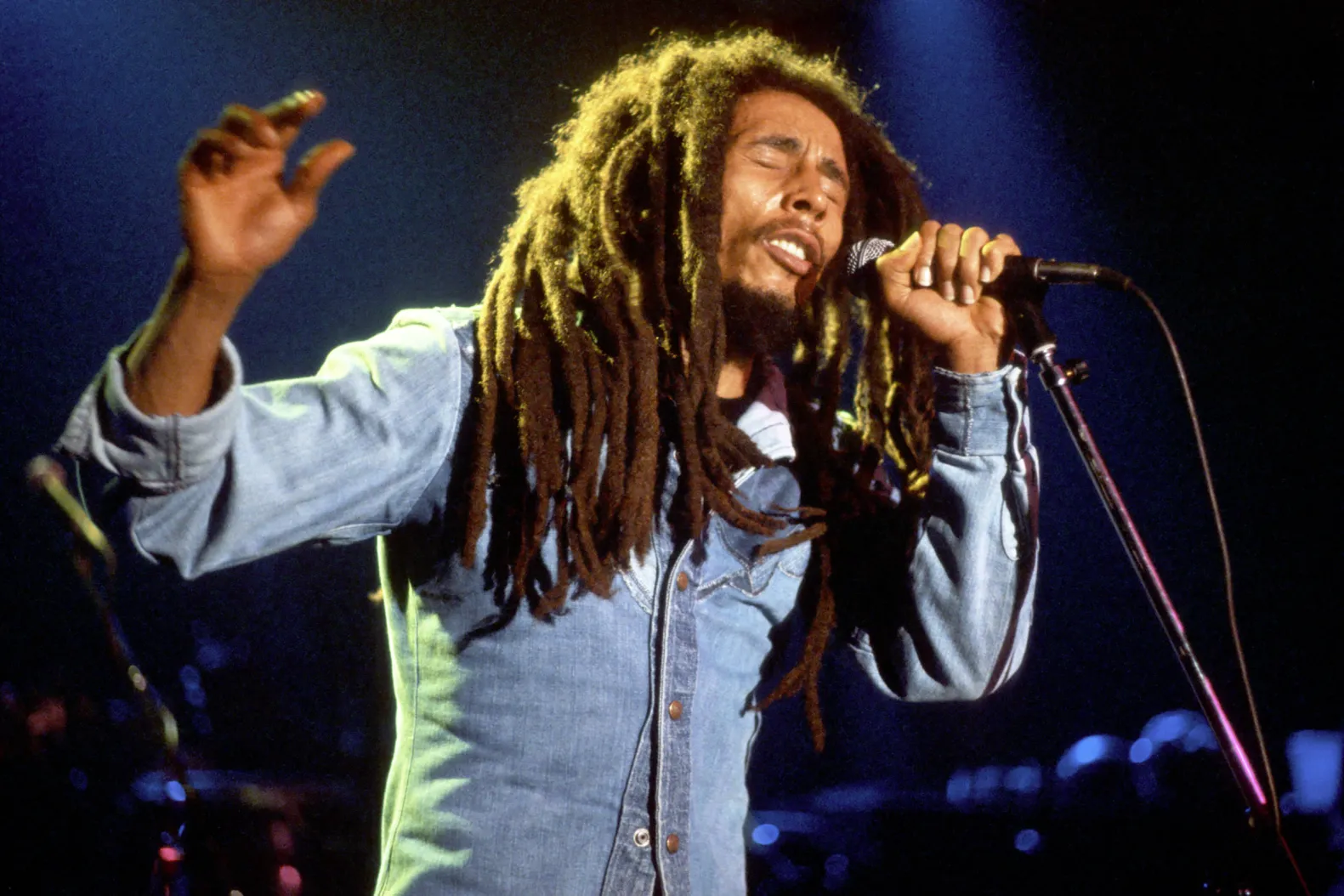
The greatest legend in the history of reggae. A few short years were enough for Robert Nesta Marley to gift us countless classics and unforgettable albums. Whether as a solo artist or with The Wailers, he wrote iconic songs like “Get Up, Stand Up”—also featuring Peter Tosh—“Kaya” and “Sun is Shining.”
Bob Marley was born on February 6, 1945, in Nine Mile, Jamaica, and passed away on May 11, 1981, in Miami at the age of thirty-six.
To this day, he remains one of the most popular and influential figures in the history of popular music.

Protagonist of a complex childhood and adolescence in Canada, Abel Tesfaye began a path of success anonymously on YouTube in 2011 under the name The Weeknd. The name refers to the moment he and a friend decided to leave school for a weekend never to return.
His music contains a great versatility and variety of styles, with sounds at times dark or melancholic (sometimes inspired by personal experiences) along with explicit and controversial lyrics, but sang elegantly. His musical style is generally qualified as the best example of Alternative R&B, with Michael Jackson and Prince as his main influences. In addition to sounds that show their Ethiopian roots and Arab culture.
Throughout his career he released 5 albums, dozens of singles and collaborated in productions with artists of all kinds, including Drake, Sia, Beyoncé, Rosalia and Lana del Rey. He received many awards, including 4 Grammys, 1 Latin Grammy and 20 Billboard Music Awards.
The best example of his musical reach just happened: His song “Blinding Lights” became the most listened to song in Spotify history.
In 2023 he will headline a tour of Latin America, visiting Mexico City, Bogotá, São Paulo, Buenos Aires and Santiago de Chile.

Born in London, Lily Allen is a singer-songwriter who has left an indelible mark on the music industry. Her debut in 2006 with the album “Alright, Still” was one of the most explosive in the musical field of recent decades, catapulting her to fame instantly.
Her unique mix of ska, pop and reggae along with her irreverent style captivated the public when she released her first single, “Smile”, which was accompanied by a video clip where she takes revenge in various ways on her ex-boyfriend who was cheating on her.
Then the single “LDN” followed, an ode to his hometown with a cheerful and fresh rhythm contrasted with acidic lyrics that things in London are not always as they seem. In the video clip something similar is observed, with Lilly happily walking through the city and seeing a colorful London, where everything looks fantastic, and then when the view changes to the other reality of the city, more violent and unpleasant.
Throughout her career, Lily Allen has proven to be a versatile and resilient artist, able to reinvent herself and stay relevant in the music scene. With albums such as “No Shame” (2018), which contains the hit “Trigger Bang” that she prepared with Giggs.
This 2024 finds her on hiatus from her work, after having recorded more than 50 songs for the next project she is working on and that we are looking forward to hear.

Owner of a distinctive voice and enigmatic persona, Sia has become a powerhouse in the pop music landscape. Hailing from Australia, and born Sia Kate Isobelle Furler, she first made waves as a contributing force behind the scenes, penning hits for artists like Rihanna and Beyoncé. However, it was her decision to step into the spotlight that truly set her on a trajectory towards global stardom.
Sia’s music style is a unique blend of pop, electronic, and indie elements, characterized by powerful vocals, emotive lyrics, and experimental production choices that consistently push the boundaries of the genre. Known for her penchant for elaborate wigs, masks that hide her face and avoiding the glare of the paparazzi, Sia’s mysterious public persona has only added to the allure of her music.
Author of 10 Studio Albums, with “1000 forms of Fear” and “This is acting” between the most successful ones, her whole discography is a chain of Successes with songs like “Confetti”, “Helium” or “Big Girls Cry”. Some of these songs went on to become the hymn of a generation: “Unstoppable” not only talks about success and pushing through obstacles, but also about the mask of confidence and what’s behind it.
She is usually work in collaboration with different artists or projects, she produced content for TV and Films like “The Hunger Games”, “50 Shades of Grey”, “The Twilight Saga”, “Wonder Woman” and several more.
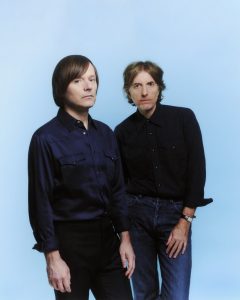
Since the nineties, the French duo Air, composed of Nicolas Godin and Jean-Benoît Dunckel, has defined a musical aesthetic that left an indelible mark on electronic music and alternative pop. Hailing from Versailles, these musicians began experimenting with synthesizers and melodies at a time when electronic music was still evolving, quickly establishing themselves as pioneers of a sound that blends sophistication and minimalism. Their work presents a sonic universe of synthesizers, soft bass, and atmospheric guitars, crafted with meticulous production that delivers a unique listening experience.
Air’s debut album, *Moon Safari* (1998), quickly became a modern classic. With tracks like “Sexy Boy” and “All I Need,” they captured a sensual, cosmic aesthetic that positioned them as one of the most influential acts in electronic music at the time. This album, drawing on influences from progressive rock to psychedelic pop, invites listeners on a sonic journey full of nostalgia, melancholy, and futuristic romance. Its success cemented Air’s place as key figures of the “French touch” movement, alongside names like Daft Punk, while always retaining their unique style.
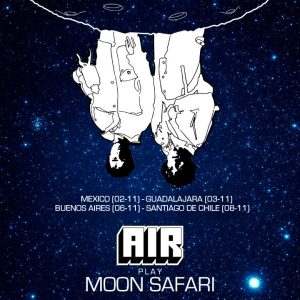 Today, Air remains a fundamental reference in the worlds of electronic music and alternative pop, to the point that their presentation was one of the main parts of the closing ceremony of Paris 2024 Olympic Games.
Today, Air remains a fundamental reference in the worlds of electronic music and alternative pop, to the point that their presentation was one of the main parts of the closing ceremony of Paris 2024 Olympic Games.
They recently made a World Tour in commemoration of 25 years of their album Moon Safari, as part of that they had presentations in Mexico, Chile and Argentina.
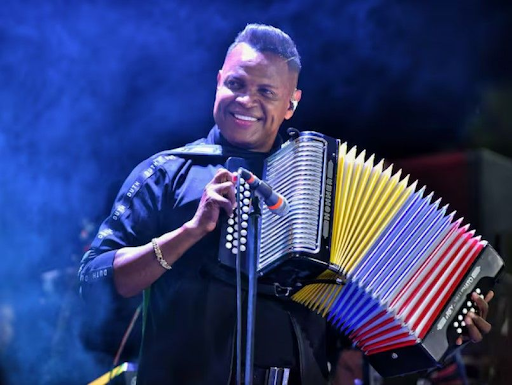
Omar Antonio Geles Suárez was born in Colombia on February 15, 1967, and beyond being a renowned accordionist, his name is synonymous with vallenato.
In 1985, alongside singer Miguel Morales, he founded the group Los Diablitos, with whom he collaborated until 2010—the year he launched his solo career, which he continued until his passing in 2024.
Classics like “Si tú lo quisieras,” “Regálame una noche,” and “No te vayas” are more than enough to highlight his significance in Colombian popular music.
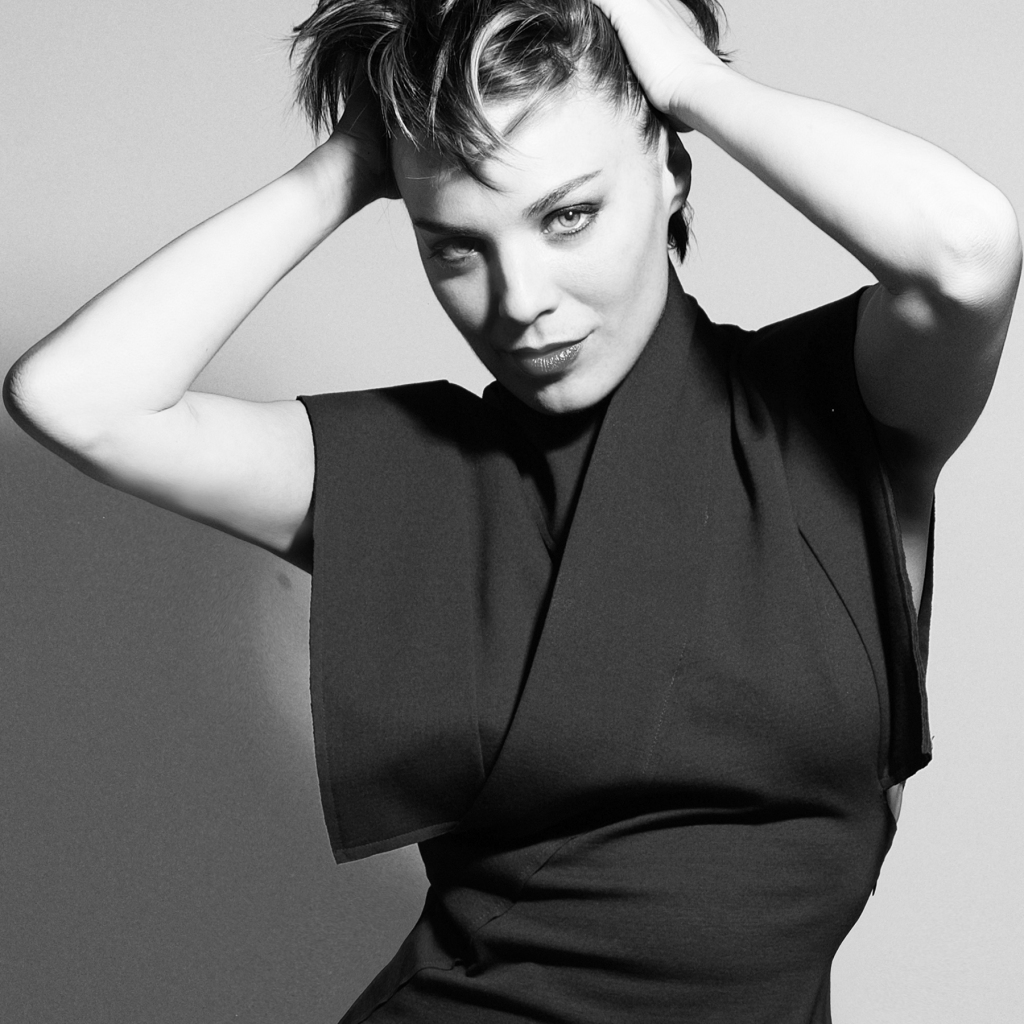
This Italian singer and songwriter rose to global prominence on the electronic music scene with her debut album “Come into My Life,” which featured multi-platinum singles such as “Freed from Desire,” “Let a Boy Cry,” and the album’s title track.
In 2005, after a several-year hiatus, Gala returned to the music scene, sharing the stage with artists like renowned dancer Rafael Amargo.
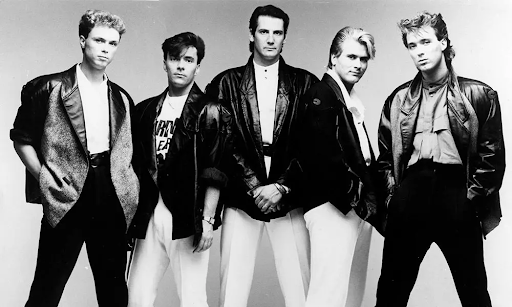
The Icons of the New Romantic Movement
Few bands define the sound and style of the 1980s as completely as Spandau Ballet. Emerging from London’s thriving club scene, they became one of the leading voices of the New Romantic movement, blending fashion, glamour, and pop sophistication into a signature style that resonated globally. With Tony Hadley’s rich, baritone vocals and the band’s lush instrumentation, Spandau Ballet brought a sense of elegance and drama to pop music, transforming radio hits into grand, emotional anthems. Songs like “True” and “Gold” have become timeless classics, encapsulating the era’s blend of romance and sophistication, while still resonating with audiences today.
Spandau Ballet’s journey began in the late 1970s, in the underground scene that would soon give birth to New Romanticism. Originally exploring punk and post-punk sounds, the band shifted their focus after discovering the electronic and funk influences emerging from clubs in London and Berlin. Their debut album, *Journeys to Glory* (1981), showcased this new direction, blending catchy basslines, intricate synthesizers, and stylish melodies. With their unique sound and polished look, Spandau Ballet quickly rose to fame, capturing the essence of the early ‘80s with an electrifying stage presence that made them instant icons.
In 1983, Spandau Ballet released *True*, the album that cemented their place in music history. The title track became an international hit, reaching the top of the charts and establishing the band as global superstars. “True” remains one of the most recognizable songs of the decade, with its smooth saxophone, soulful lyrics, and unforgettable chorus. This success was followed by “Gold,” a triumphant anthem that showcased the band’s evolving sound and commitment to emotional expression. With *True*, Spandau Ballet redefined pop music, merging R&B influences with their New Romantic roots to create a sophisticated, heartfelt sound that struck a chord worldwide.
Today, Spandau Ballet’s legacy endures as they remain symbols of style, romance, and innovation in pop music. While the band members have pursued solo careers and occasionally reunited, their impact on music and culture is undeniable. Spandau Ballet not only captured the spirit of the 1980s but also set the standard for elegance and emotion in pop music, influencing countless artists across genres. Their music continues to inspire and resonate with fans new and old, affirming their place as true icons of a golden era in pop history.
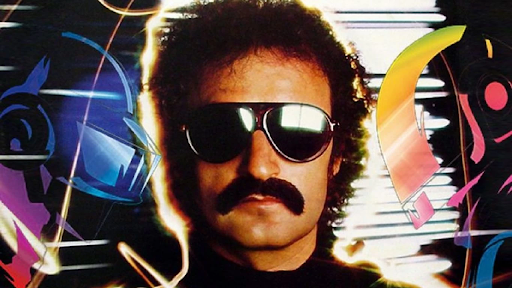
The Architect of Disco and Beyond**
When it comes to electronic music, few names carry the influence and innovation of Giorgio Moroder. Widely recognized as the “Father of Disco,” Moroder’s pioneering work in the 1970s and ‘80s helped shape the soundscape of popular music and laid the foundation for modern electronic and dance genres. From his groundbreaking collaborations with Donna Summer to his visionary film scores and solo albums, Moroder created a sound that was lush, futuristic, and irresistible. With pulsating synthesizers, driving beats, and an unmistakable sense of drama, Moroder’s music revolutionized not only disco but also the way people viewed the possibilities of electronic sound.
Moroder’s career skyrocketed in 1975 when he partnered with Donna Summer to produce the iconic track “Love to Love You Baby.” This song, with its seductive rhythm and moaning vocals, became an instant sensation and established Moroder as a production genius. However, it was their 1977 hit, “I Feel Love,” that forever changed the music industry. Using synthesizers to create an entirely electronic backing track, Moroder crafted a hypnotic groove that was like nothing the world had ever heard. “I Feel Love” became a defining moment in disco and electronic music, influencing countless artists and laying the groundwork for genres like techno and house.
Beyond the dance floor, Moroder’s creativity led him to film scores that were as impactful as his studio work. His music for *Midnight Express* (1978) won an Academy Award and showed his ability to evoke deep emotion through electronic sound. Later, his scores for films like *Scarface* and *Flashdance* introduced his music to a wider audience, giving the world unforgettable tracks like “Flashdance… What a Feeling” and “Take My Breath Away” from *Top Gun*. Moroder’s cinematic compositions brought an emotional depth and atmospheric quality to his work, proving that synthesizers could tell stories just as powerfully as traditional orchestras.
Today, Giorgio Moroder is celebrated as a true icon in music, whose influence spans decades and genres. After returning to the stage in the 2010s with new projects and collaborations, he reminded the world of his unparalleled impact on modern music. Revered by contemporary artists and producers alike, Moroder’s legacy as a visionary and architect of sound remains unmatched. His music—timeless, innovative, and endlessly danceable—continues to shape the evolution of electronic music, affirming his place as one of the greatest and most enduring pioneers in the industry.

Without a doubt, Kylie Ann Minogue’s life changed for the better in 2001 with the release of her eighth studio album, “Fever”, which went on to earn her two Brit Awards in 2002.
Born in Australia, Kylie began her career as a child actress and soon made her mark on the music scene with a series of hits, including “In Your Eyes”, created in collaboration with renowned songwriters.
Kylie Minogue now joins the O.M.S.A/E.C.S by Bucks Music Group catalog.

From Runways to Indie Pop
Suki Waterhouse has made a name for herself as a model, actress, and now, as an indie-pop singer with an enchanting and ethereal sound. Originally from London, Waterhouse rose to fame in the fashion world, walking runways and appearing in major campaigns. However, her artistic vision extended beyond modeling, and she transitioned into acting with roles in films like The Bad Batch and Assassination Nation. Recently, she’s ventured into the music world, crafting a sound that’s intimate, emotional, and full of indie charm. Her music explores themes of love, vulnerability, and longing, wrapped in dreamy melodies that offer listeners a glimpse into her unique world.
Her debut album, I Can’t Let Go, was released to critical acclaim, showcasing her delicate vocals and poetic lyricism. Songs like “Good Looking” and “Melrose Meltdown” have drawn praise for their atmospheric production and Waterhouse’s ability to convey deep emotion through subtle inflections and haunting lyrics. Her music has been described as cinematic, blending elements of folk, indie rock, and dream pop, creating a sound that’s both nostalgic and fresh. With a style influenced by artists like Mazzy Star and Lana Del Rey, Waterhouse has carved out a distinctive place in the indie music scene.
Beyond her talents, Suki Waterhouse’s journey from model to singer-songwriter has made her a figure of inspiration. Fans admire her willingness to explore new creative paths and her commitment to expressing herself authentically. She brings an honest vulnerability to her work, both in her music and public persona, making her relatable and endearing to audiences worldwide. Her seamless shift from modeling to music demonstrates her versatility and artistic bravery, qualities that continue to draw new fans to her work.
Suki Waterhouse’s rise in indie music is just beginning, but her unique sound and style have already left a lasting impression. She stands out as an artist who isn’t afraid to follow her passions wherever they lead, proving that her talent extends far beyond the runway. As she continues to grow as a musician, Waterhouse’s future in the music industry looks as bright and promising as her career in fashion.
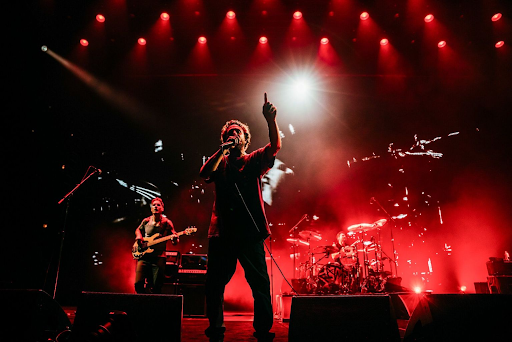
Formed in Los Angeles in 1991, Rage Against the Machine is perhaps the group that best combined the stridency of heavy metal with rap, punk rock, and funk. Zack de la Rocha, Tom Morello, Tim Commerford, and Brad Wilk attracted attention from the start thanks to their performance at the third edition of the Lollapalooza festival, which represented a great starting point for a career that would lead them to sell more than sixteen million records worldwide.
Their first album, self-titled, was a commercial success, which included one of their greatest hits: Killing in the Name. The same would happen with the following “Evil Empire” (1996) and “The Battle of Los Angeles” (1999), both of which led the Top 200 of Billboard magazine with songs like “Bulls on Parade” and “Guerrilla Radio”.
In 2000 they released “Renegades”, a covers album of Bob Dylan, The Stooges, Afrika Bambaata, and The Rolling Stones, among others, but shortly after they separated due to artistic decisions that led to the departure of singer Zack de la Rocha. They reunited in 2007 for a show at the Coachella festival that would lead to a world tour that would bring them to South America for the first and only time.
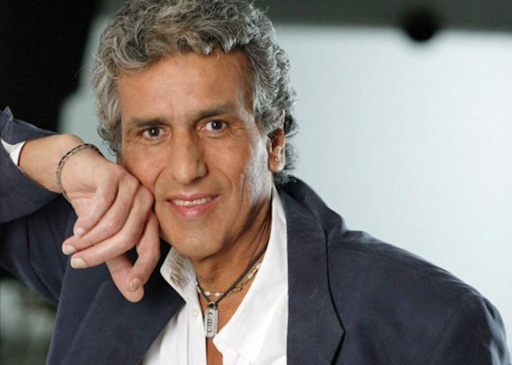
The Soul of Italian Pop
In the landscape of Italian music, few names resonate as powerfully as Toto Cutugno. Known for his melodic voice, heartfelt lyrics, and charismatic stage presence, Cutugno became an emblem of Italian pop from the 1980s onward. With hits like “L’Italiano,” he captured the essence of Italian life and identity, blending romance, pride, and a deep connection to his roots. Cutugno’s music is timeless, bridging generations with songs that evoke the charm and complexity of Italian culture, making him a beloved figure not only in Italy but worldwide.
Cutugno’s journey into music began with a passion for songwriting, and before becoming a household name, he wrote hits for other major artists, gaining a reputation as a gifted composer. His breakout moment came with the release of *Solo Noi* in 1980, which won him the prestigious Sanremo Music Festival. This victory set the stage for his international success, especially with “L’Italiano,” released in 1983. This song became an anthem for Italians across the globe, celebrating the Italian spirit in a way that resonated deeply with audiences far beyond Italy’s borders. The catchy melody and lyrics, filled with references to Italian identity, gave listeners a sense of pride and nostalgia.
Throughout his career, Cutugno skillfully balanced emotional ballads with upbeat pop tunes, blending elements of traditional Italian music with contemporary sounds. His lyrics often explored themes of love, heartbreak, and longing, striking a chord with audiences who felt his music spoke directly to their own experiences. Cutugno’s talent as a storyteller and his knack for relatable, melodic compositions ensured that his songs would be timeless. From *Gli Amori* to *Insieme: 1992*, Cutugno’s hits have been an integral part of Italian music, soundtracking weddings, family gatherings, and celebrations for decades.
Today, Toto Cutugno is celebrated as an Italian icon, having left an indelible mark on pop music. His ability to capture the Italian essence through song made him an ambassador of Italian culture, with a legacy that continues to inspire new generations of fans and musicians. Even in a rapidly evolving musical landscape, Cutugno’s songs remain as relevant and cherished as ever, a testament to the enduring power of his voice and vision.
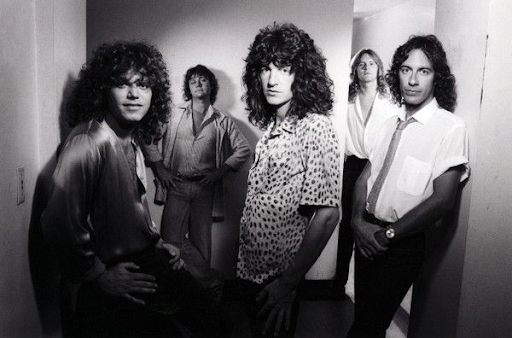
More Than Power Ballads: A Legend of American Rock
With a career spanning over five decades, Illinois-born band REO Speedwagon has proven to be a lasting force in American rock, evolving their sound and adapting to changes in the music industry without ever losing their essence. From their early days in the rock club scene, the band—led by Kevin Cronin—has won the hearts of multiple generations with their onstage energy and lyrics that speak to the human experience.
While songs like “Keep On Loving You” and “Can’t Fight This Feeling” became defining anthems of an era and remain radio staples to this day, REO Speedwagon is far more than just their power ballads. Tracks like “In My Dreams” and “Time for Me to Fly” are also unforgettable gems that showcase the band’s emotional depth.
Albums such as “Hi Infidelity” and “You Can Tune a Piano, But You Can’t Tuna Fish” highlight the band’s ability to craft powerful, melodic rock. Their music, rooted in classic rock and roll, has also embraced elements of hard rock and AOR (Album-Oriented Rock), allowing them to reach a broader and more diverse audience.
In short, REO Speedwagon is—and will always be—a true legend of American rock.
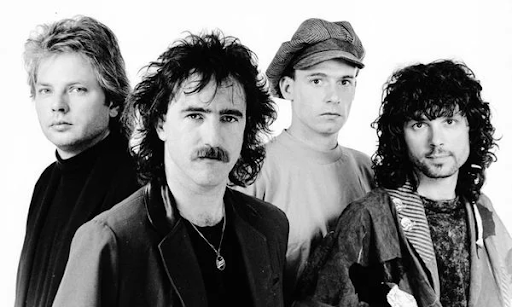
The German Band Behind an Eternal Anthem
Opus, the Austrian rock band (often mistakenly thought to be German), captured a unique place in music history with their international hit, “Live is Life.” Formed in 1973, Opus started as a progressive rock group before gradually embracing a pop-rock sound that would resonate with audiences worldwide. Known for their anthemic style and infectious energy, Opus achieved monumental success with “Live is Life,” a song that became a rallying cry for celebration and resilience. While the band has released numerous albums and enjoyed a dedicated fanbase, it’s “Live is Life” that has solidified Opus’ legacy, making them forever synonymous with one of the most iconic tracks of the 1980s.
The track “Live is Life,” released in 1984, has become much more than just a song; it’s a timeless anthem that unites fans across generations. Its irresistible beat and uplifting chorus make it perfect for large gatherings, sports events, and moments of pure, shared joy. But perhaps the most iconic moment linked to the song came when Diego Maradona, the legendary Argentinian soccer player, was filmed during warm-ups to “Live is Life” before a UEFA Cup semi-final match in 1989. In this unforgettable scene, Maradona is seen playfully dancing, dribbling, and performing effortless tricks with the ball, all in perfect rhythm to the music. His footwork and natural charisma, set to the sound of Opus’ infectious anthem, made the clip go viral long before social media existed, immortalizing both the song and Maradona’s unmatched flair. That single moment captures the essence of “Live is Life”—an unapologetic celebration of life, freedom, and passion.
To this day, “Live is Life” remains a staple at sports events and a fan favorite worldwide, proving that its energy and spirit are just as potent as they were decades ago. Opus may have other musical accomplishments, but “Live is Life” will always stand out as a transcendent anthem, celebrated by music lovers, athletes, and fans alike.
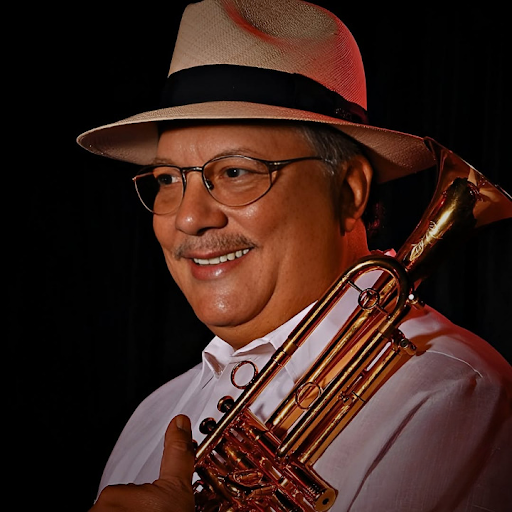
Talking about the work of Arturo Sandoval is to enter one of the fundamental points in the history of musical crossover. This Cuban trumpeter and pianist began his career with Paquito D´Rivera and Chucho Valdés in the legendary Irakere group, which would become the most important in the history of jazz in their country.
In 1978 they performed at the famous Newport Festival, which introduced them to the American public, and for Sandoval meant the possibility of becoming a professor at the prestigious International University of Florida.
Arturo Sandoval has shared the stage with many luminaries such as Dizzy Gillespie (one of the inventors of BeBop), Stan Getz, and The Bad Plus. He has received nine Grammy Awards and has been nominated seventeen times. He has also won six Billboard Awards and an Emmy Award

The Rising Star of Alternative Pop
The songs on Glasshouse, Eloise Viola’s debut album, navigate the finest R&B and pop. Written and recorded in Los Angeles, Nashville, and London, this artist’s songs represent a strong reference to the internal struggles typical of human nature. Eloise is an ambassador of “Self-Confidence” and has always preached for it.
As an artist, Eloise Viola achieved more than thirteen million streams on Spotify and one hundred and ten thousand monthly listeners on the same platform, which put her in the spotlight of specialized media such as Euphoria magazine, which exclaimed that Eloise Viola is “Destined to become a name we are going to recognize in the future,” or the already legendary Billboard magazine, which also did not skimp on praise for the singer.
Live, Eloise is a force of nature, with energetic and empowering shows that led her to tour Europe and the United Kingdom with pop giant Anastacia, or to be widely broadcast on the prestigious BBC Radio 2.

Originating from Germany, this Pop/Rock band was founded by twins Bill and Tom Kaulitz along with Georg Listing and Gustav Schäfer in 2001 and released their first album (Schrei) in 2005 when they were nothing more than teenagers.
They demonstrated their quality in a short time reaching sales of several million records in Germany and extending their influence to Austria, Switzerland and other Eastern European countries. For several years they remained at the top of the charts of their country and such a success led them to re-release several of their albums with songs in English for international audiences.
After several years of albums where they reflected a clear influence of Dark and Emo styles, they began a turn of their musical style towards a more pop and electronic sound, change that continues to this day and in Bill’s words “reflects the growth of the band and fans over the years”.
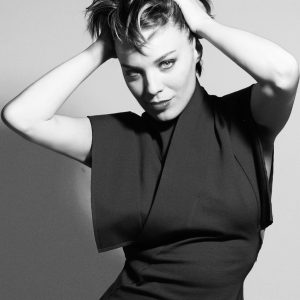
Gala Rizzatto, emerged onto the international music scene in the mid-’90s with her chart-topping hit Freed from Desire. Born in Milan, Italy, her musical journey began at an early age, fueled by a passion for both classical and contemporary genres. Her breakthrough single not only dominated the airwaves but also became an anthem of the era, blending infectious dance beats with Gala’s soulful vocals.
Her musical repertoire extends beyond the iconic “Freed from Desire,” showcasing her versatility as an artist. Her albums, including “Come Into My Life” and “Tough Love,” feature a fusion of styles, from pop and dance to R&B influences. With a discography that spans decades, Gala’s impact on the music industry extends beyond her initial success, solidifying her as a respected and enduring figure in the world of dance and electronic music.
Most recently, her hit was the base used by English Football Fans for the creation of Vardy’s On Fire they popularized on the stadiums during the 2016 Eurocup.
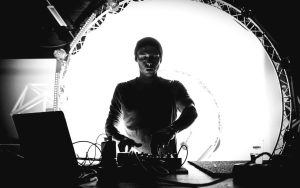
Recondite is an artist who operates in his own rather closed-off world, but you are welcome to join him. For the last decade, he has honed a signature sound that is a pure and unapologetic expression of self. His undulating sounds, idiosyncratic use of acid and always soothing atmospheres offer a place to get lost, reflect and revive yourself. This is a result of growing up in Lower Bavaria, a region of enchanting forests and insular communities. It is there that he first holed up to make music with no agenda more than 10 years ago.
The self-taught producer found his own sound and took it to Berlin on a whim. A meeting with Scuba gave him an intro to the local scene and he has never looked back since, going on to play every major club and festival in the world and releasing seven albums on esteemed labels like Innervisions, Ghostly, Absurd Recordings/Acid Test and his own Plangent Records.
He has been recently in Latin America, during 2024 and 2023, participating on the AfterLife events of Medellin, Buenos Aires and Santiago de Chile, and the Zamna Festival in Brazil.
His music is filled with different moods, but they are subtle undulations that require – and reward – close attention. As a hugely self-analytical figure, music is where Recondite takes full control and expresses himself in the most honest way. That is the same with his capturing live sets, which are never planned but instead react to the crowd and move them emotionally whether going deep and somber or more expansive and raw. That is something most artists strive towards for a whole career, but Recondite has been Recondite since day one.

Amy Wadge is one of the UK’s most prolific contemporary songwriters. She has co-written both for and with several artists like James Blunt, Dua Lipa, Jason Mraz, Jessie Ware, Joel Adams, Rebecca Ferguson, Shannon Saunders, The Shires and a lot more.
Amy’s most notable success to date comes from her long-established writing partnership with Ed Sheeran. Their friendship goes back to their teenage years, and together they created Hits like Thinking Out Loud. This song broke all charts and several records, won 2 Grammy and has sold until now over twelve million copies worldwide, has been viewed 1.25 billion times on YouTube and streamed over a billion times on Spotify.
Despite this, Amy first came to prominence as a singer songwriter in her own right. Having moved from her hometown of Bristol to study in Wales, she found herself at the heart of a hugely dynamic music scene, touring the length and breadth of the UK and Europe. She released five solo albums, various EPs and three collaborative albums with other artists along the way. However, since becoming a mother, Amy’s main focus has been on writing.
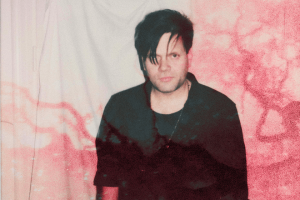
In a world where electronic music is often associated with frenetic beats and strobe lights, Danish artist Anders Trentemøller has established himself as an enigmatic, singular figure. Since his beginnings in the early 2000s, Trentemøller has created a dark, evocative, and richly nuanced sound that defies conventional labels. His music blends electronic, rock, and post-punk, tinged with nostalgia and melancholic beauty, challenging expectations with each release. While others seek to produce dance-floor anthems, Trentemøller offers captivating soundscapes that evoke deep emotions and cinematic textures.
Trentemøller’s career began with his EP *The Trentemøller Chronicles* and the acclaimed album *The Last Resort* (2006), a work that established him as a prodigious talent in the electronic music world. This album, composed of haunting atmospheres and hypnotic rhythms, marked the start of a sonic journey overflowing with sensitivity and detail. Tracks like “Take Me Into Your Skin” and “Miss You” feel like stories unto themselves, filled with silences, reverberations, and flawless production that invites listeners to lose themselves in an alternative universe of dark tones and dreamlike soundscapes. Rather than settling for the predictable, Trentemøller has built his reputation by pushing the boundaries of electronic music, constantly exploring new paths.
As his career has progressed, Trentemøller has continued to evolve, incorporating elements of shoegaze, gothic rock, and post-punk into his work. His albums *Into the Great Wide Yonder* (2010) and *Fixion* (2016) showcase this evolution, combining ethereal guitars and enveloping synthesizers to create a sound that evokes bands like The Cure or Joy Division, but with a modern, personal twist. It’s not just background music; it’s an immersive, emotional experience, moving between the organic and the electronic, the somber and the expansive, the ethereal and the visceral.
Today, Trentemøller remains a crucial figure in the electronic scene, maintaining his independence and authenticity in an increasingly commercial landscape. His live performances are acclaimed for transforming his music into a multisensory spectacle, where lights, projections, and sounds merge to create a unique experience. Trentemøller has shown that electronic music doesn’t have to be superficial; it can be introspective, haunting, and profoundly human. With each album, he defies genre expectations and immerses listeners in an emotional journey, reaffirming his status as one of the most visionary and respected artists in electronic music today.

Celine Dion, a name synonymous with vocal excellence and emotional power, has been a dominant force in the music industry for decades. Bursting onto the global stage in the late 1980s, Dion’s career has been a testament to her extraordinary talent and unwavering dedication. With a career spanning over 30 years, her influence extends far beyond her native Quebec, captivating audiences worldwide with a voice that is both technically flawless and profoundly expressive.
Dion’s music is a captivating blend of pop, classical, and adult contemporary genres. Among her most beloved Songs are “My Heart Will Go On” from Titanic, “Shadow of Love” or “You and I”.
Her career is marked by incredible milestones, including several Grammy Awards and a residency at Las Vegas that redefined live performances. Dion’s Las Vegas shows were more than just concerts; they were theatrical events that highlighted her ability to connect with audiences on a grand scale.
Back in 2022, she was diagnosed with a neurological disorder that affected her muscles and stopped her from being able to perform publicly. With the help of doctors and specialists in the area she managed to regain her capabilities, although not overcome fully the diagnosis as it’s a permanent disease.
More recently, in 2024, she made a staggering comeback in the Paris 2024 Olympic Games Opening ceremony, performing “L’Hymne a L’Amour” in a heart-moving closing that was viewed and applauded for millions around the world.
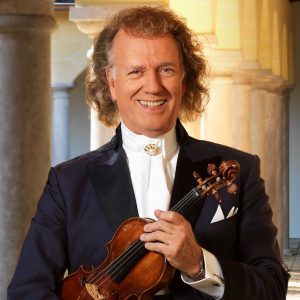
Known as the King of the Waltz, André Rieu is a Dutch violinist, conductor, and composer who has captivated millions of people around the world with his unique style and charisma on stage.
Born in Maastricht in 1949, Rieu began his musical career at an early age, studying violin at the Liège Conservatory and perfecting his technique with master classes by important figures.
In 1987, Rieu founded the Johann Strauss Orchestra, a group of more than 60 musicians that accompanies him in his live performances. With this orchestra, Rieu has toured stages all over the world, at an incredible pace that has him frequently on the Billboard Top Tours (In 2023 he reached number 23 with 86 shows, including several in South America.
His dynamic and energetic style, coupled with his impeccable violin playing and his special connection with the audience, have made Rieu an unprecedented musical phenomenon. Their concerts are true celebrations of music, where the audience dances, sings and enjoys a festive and contagious atmosphere.
André Rieu – The Beatiful Blue Danube

Lindsey Stirling is one of the most innovative artists of the last decade. This American violinist, composer and dancer has challenged the boundaries of the genre, fusing classical music with electronic rhythms and elements of dubstep, something that few could have imagined until her arrival. Since her participation in the program America’s Got Talent in 2010, where she was eliminated in the final rounds with the phrase “What you’re doing is not enough to fill a theater”.
Stirling’s real impact came with his self-titled debut album in 2012. With songs like “Shatter Me”, the violinist showed that the violin could be the protagonist on dance floors. But it was not only his music that captured the public’s attention, but also his video clips, where Stirling mixes his incredible ability to play the violin with elaborate choreography.
On platforms such as YouTube, Instagram and TikTok his presence grew exponentially, reaching millions of views, followers and consolidating himself as a star of the digital and music era.
Stirling’s career is testament to his resilience, in 2014 he overcame anorexia and released his album Shatter Me to raise awareness, especially among young people, to break the fears that bind them and be themselves without fear. Her subsequent albums, such as Brave Enough (2016) have not only explored new sounds, but have also revealed an artist in constant evolution, capable of tackling deep themes, from self-improvement to spirituality.
Today, Lindsey Stirling is more than just a violinist: she is a visual creator and a pioneer in the music industry. Her ability to merge artistic disciplines, and the message of resilience she communicates through her music, have made her a global reference. From major festivals to world tours, Stirling continues to prove that the power of music transcends genres and that, in his hands, the violin is the weapon of a cultural revolution.
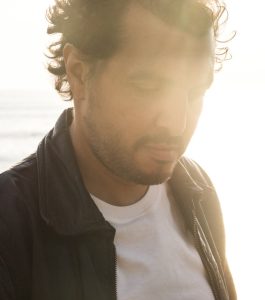
Mathieu Hocine (aka Kid Francescoli) is a multi-instrumentalist (from bass, drum machine, piano to synthesizer), producer, singer and composer from Marseille. Since 2002, his electro-pop music influenced by synth/indie pop and techno – evokes magic memories of summer vacations and endless night walks. His hit song “Moon (And It Went Like)” continues to blow up TikTok charts with its tenacious refrain and its heartfelt instrumental just like all the rest of his discography.
Among his influences are pop that he worships and the French touch (of course), the US rap, the soundtracks from composers such as François De Roubaix or Ennio Morricone.
His studio, which is located at the very heart of Marseille, is flanked by a fresco of palm trees at sunset as a nod to Scarface and Brian De Palma’s cinema. He wants it, above all, as a space for life and collaboration. Kid Francescoli composes, plays with his bass, drum machine, piano, synthesizer and sometimes even sings to give life to his souvenirs around the world and especially, from his hometown through dreamy and sunny romantic & soulful melodies also influenced by French touch.
Kid Francescoli’s music has been used for many commercials (Lacoste, Chanel, Lancôme, Aldi, Citroën…), in series (Mafiosa, Skam, Valeria and Emily in Paris) but also in cinema (soundtrack of Azuro, feature film by Matthieu Rozé).

Debbie Gibson, the pop sensation of the 80s, has left an indelible mark on music history with her romantic melodies and lyrics. From his debut on the music scene at the age of 16 (when he was still in school), he conquered the hearts of fans around the world with his innate talent.
Her biggest hits continue, decades after their release, resonating in the hearts of millions of fans around the world.
“Lost in Your Eyes” is a romantic ballad that reached No. 1 in all music charts and touched the hearts of millions. With her emotive voice and captivating melody, Debbie showed the world her own personal process and meeting love for the first time.
 Over the years, Debbie has continued to captivate audiences of all ages with her music and charisma: She participated in several TV shows like Dancing with The Stars, and Donald Trump’s Celebrity Apprentice, participated in Katy Perry’s “Last Friday Night (T.G.I.F)” videoclip. More recently, in 2023 she’s been touring through USA with her “Winterlicious 2023” show.
Over the years, Debbie has continued to captivate audiences of all ages with her music and charisma: She participated in several TV shows like Dancing with The Stars, and Donald Trump’s Celebrity Apprentice, participated in Katy Perry’s “Last Friday Night (T.G.I.F)” videoclip. More recently, in 2023 she’s been touring through USA with her “Winterlicious 2023” show.
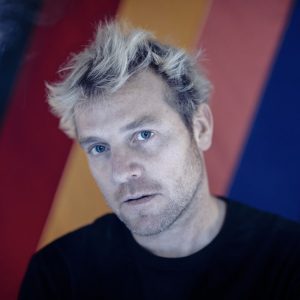
French79, the moniker of French producer and composer Simon Henner, has emerged as a visionary force in the ElectroPop scene. With a career rooted in pushing the boundaries while inspired by Daft Punk and Kid Francescoli, French79 has carved a niche for himself with his lush soundscapes and innovative approach to production.
Hailing from Marseille, his music embodies a harmonious blend of nostalgic synthwave aesthetics and contemporary electronic elements, creating a sonic journey that captivates listeners from the first note.
The release of his critically acclaimed debut album, “Olympic,” in 2014 is what made his career take off. The album showcased his prowess in crafting immersive, cinematic experiences through music. Tracks like “Diamond Veins” featuring Sarah Rebecca and “Golden Times” demonstrated his ability to seamlessly fuse retro-futuristic vibes with modern electronic sensibilities.
As his career progresses, French79 continues challenging himself. His last Album, “Teenager”, was released after an international tour with more than 100 dates.

Chance Peña is a name that is quickly becoming synonymous with emotional depth and genre-defying sound. As an emerging force in alternative pop, Peña blends elements of indie, R&B, and electronic music to create a style that is uniquely his own. With introspective lyrics and a voice that’s both soulful and raw, he captures the essence of vulnerability and self-reflection. Since his debut, Peña has steadily built a dedicated fanbase, thanks to his honest approach to songwriting and his ability to connect with listeners on a deeply personal level. His music resonates with anyone who’s ever felt the weight of life’s complexities and the power of music as a form of catharsis.
Peña’s journey began as a teenager uploading covers and original songs to platforms like YouTube, where his raw talent quickly caught the attention of listeners. His breakthrough came with the release of “Cold in California,” a track that showcased his ability to weave together haunting melodies and emotionally charged lyrics. The song, with its cinematic quality and atmospheric production, captured the attention of the alternative pop community and marked the beginning of Peña’s rise. His work often explores themes of love, loss, and introspection, tapping into universal emotions while maintaining an authenticity that sets him apart from the mainstream.
What distinguishes Chance Peña from many of his contemporaries is his willingness to experiment with sound. While rooted in alternative pop, his music ventures into electronic textures, ambient atmospheres, and minimalist beats, creating a captivating sonic landscape. Tracks like “Unseen” and “Again” demonstrate Peña’s unique ability to blend delicate vocals with experimental production, resulting in a haunting, immersive experience. He’s unafraid to take risks, constantly evolving his sound while maintaining the raw emotion at the core of his artistry.
As Chance Peña continues to grow in popularity, there’s no doubt that his music will continue to evolve, further cementing his place in the alternative pop scene. His blend of introspective lyricism, genre fusion, and emotionally charged performances make him one of the most exciting artists to watch. With his unique sound and unwavering authenticity, Chance Peña is poised to be a defining voice in the future of alternative music, capturing the hearts of fans worldwide.
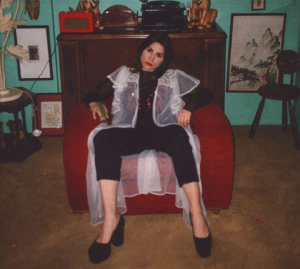
Anna Lena Bruland was expressly warned by her grandfather, a renowned conductor in Norway in the 50s and 60s, not to pursue an artistic career. But Bruland was not deterred; there was simply never any other option: »I had to be a musician because there’s nothing else I could do.«
EERA is the solo project of the Norwegian, who now lives in Berlin after a stint in the UK. Her debut album ›Reflection of Youth‹ is dreamy and intimate, raw, bold and uncompromising. With musical echoes of PJ Harvey, Deerhoof and Elliott Smith, it is an album of contrasts and confidence in equal measure. Soothing synthesiser sounds create the basis for Bruland’s pulsating vocals and a sonic texture that exudes vulnerability. ›Speak‹, her second album, follows in 2021.
Two of her songs from that album were selected to be part of the soundtrack for the Mexican series “Ella camina Sola” (2023).
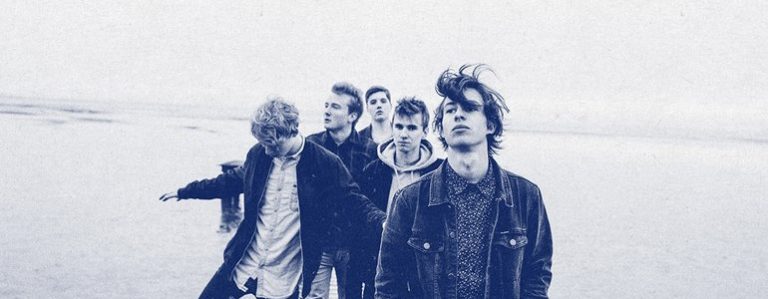
Giant Rooks, the German indie rock band formed in 2014 in Hamm, has taken the European music scene by storm with their fresh style and undeniable talent. Comprised of Frederik Rabe (vocals and guitar), Finn Schwieters (guitar), Luca Göttner (bass), Finn Thomas (drums), and Jonathan Wischniowski (keyboards), the band has crafted a unique sound that blends pop, alternative rock, and electronic influences, creating a melodic and vibrant mix that connects instantly with audiences. Though young, Giant Rooks has shown remarkable musical maturity and a special knack for crafting deeply captivating songs.
 Their 2017 EP New Estate was the first hint of their ability to create indie pop anthems filled with energy and emotion. With hits like “Bright Lies” and “New Estate,” the band began gaining recognition both in Germany and across Europe, standing out for their well-crafted instrumentation and Frederik Rabe’s distinctive voice, which has become their signature sound. The EP opened doors for a European tour and cemented their reputation as a band to watch, bringing them to some of the continent’s biggest festivals.
Their 2017 EP New Estate was the first hint of their ability to create indie pop anthems filled with energy and emotion. With hits like “Bright Lies” and “New Estate,” the band began gaining recognition both in Germany and across Europe, standing out for their well-crafted instrumentation and Frederik Rabe’s distinctive voice, which has become their signature sound. The EP opened doors for a European tour and cemented their reputation as a band to watch, bringing them to some of the continent’s biggest festivals.
In 2020, Giant Rooks released their much-anticipated debut album, Rookery, an album that confirmed their skill in blending genres to create a sound that feels fresh and relevant. Songs like “Watershed” and “Heat Up” combine introspective lyrics with dynamic instrumentation that oscillates between the melancholic and the euphoric. Rookery received critical acclaim and showcased the band’s growth in both lyrical depth and production, establishing them as one of Europe’s most promising indie rock acts.
Despite their short career so far, Giant Rooks has amassed a solid fan base and continues to grow in popularity internationally. Last May they were the Suppport-Band for Louis Tomlinson during his tour of Latin America, performing with great success in Brazil (Rio de Janeiro, Sao Paulo, Curitiba), Montevideo, Asunción, Santiago de Chile, Lima, Bogotá and San José de Costa Rica. They also performed in Buenos Aires, at the Vélez Stadium and with their own show at Uniclub.
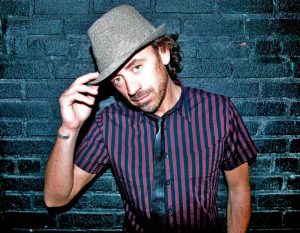
Hailing from provincial Italy, world class DJ & producer Benny Benassi is a name needing little introduction but always deserving of wide admiration and acclaim as he grew from club DJ to festival king, to multi-million selling record producer.
There is no better place to start delving into the rich history of the Benassi career than with his international blockbuster, “Satisfaction” and its game-changing music video that became his launch pad into stardom.
This was followed by his debut album Hypnotica, which reached top 20 across nearly all parts of Europe within the first month of release. And later on by “Bring The Noise”, for which he won a Grammy Award.
Along his career he made several successful collaborations, like the one with Chris Brown with whom he released amazing songs like “Beautiful People” and “Paradise”, or “Cinema” with Gary Go.
In recent years, Benny’s main releases include “Everybody Needs A Kiss”, “Lonely Nights”, “Inside” and “Everybody Hates Monday Mornings”.
Beyond his own productions he brought his sound to a wider musical audience with a flurry of high-profile remixes with the likes of Bob Marley & The Wailers, Giorgio Moroder, Madonna, Sean Paul and the Rolling Stones, to name but a few; whilst maintaining a weekly radio show on the US heavy-weight iHeart Radio broadcasting to a staggering quarter of a billion listeners monthly.
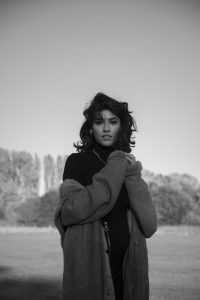
Alternative Pop Artist from Blackburn, England; she is undoubtedly one of current music’s most promising artists as is reflected by the Press’ appraisal.
Her earlier music has a dark hue, with folk and country shadings, moody blues and downtempo electronic elements; while her later works show a new exploration of sounds. When asked about the influences on her life, she explained: “My dad surrounded me with folk music and my mum surrounded me with the soul music… Aretha Franklin, Billie Holiday and Marvin Gaye.”
Her albums “Careless People” and “Here Comes Trouble” show a great musical growth, and her singles “Mexico”, “Bad News” and “Boyfriend” (An anthem to independent women) are the bases of a promising future.
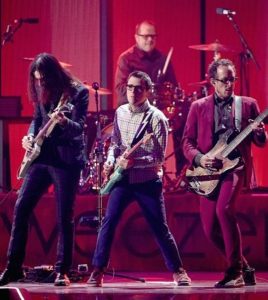
Since their emergence in the 1990s, Weezer has become synonymous with infectious melodies, quirky lyrics, and an unmistakable blend of alternative and power pop. Formed in Los Angeles in 1992, the band, led by frontman Rivers Cuomo, quickly captured the hearts of music enthusiasts with their self-titled debut album, affectionately known as the Blue Album. Tracks like “Buddy Holly” and “Say It Ain’t So” catapulted Weezer to mainstream success, earning them a devoted following that continues to grow with each passing year.
Throughout their storied career, Weezer has navigated the ever-changing landscape of alternative rock with aplomb, releasing a diverse array of albums that showcase their versatility and songwriting prowess. From the introspective musings of “Pinkerton” to the radio-friendly hooks of “Make Believe” and the genre-bending experimentation of “Everything Will Be Alright in the End”.
Weezer’s discography is a testament to their ability to evolve while staying true to their signature sound. With each release, they continue to captivate audiences with their infectious energy and unabashed love for rock ‘n’ roll.
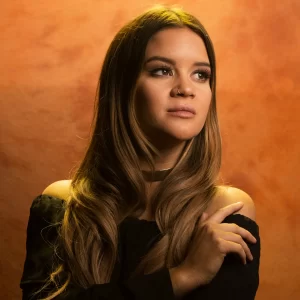
A Rising Star in Country Music with a Message of Empowerment
Maren Morris is a celebrated American country singer-songwriter known for her powerful vocals and poignant songwriting. Born on 1990, in Texas, Morris rose to prominence with her debut single “My Church” in 2016, which not only became a chart-topping hit but also earned her a Grammy Award for Best Country Solo Performance. Her music seamlessly blends country, pop, and folk influences, making her a versatile and innovative force in the industry.
Morris’s second album, “Girl,” released in 2019, showcased her continued growth as an artist. The title track “Girl” became another chart-topper, and the album earned her critical acclaim, including multiple Grammy nominations. Her ability to tackle both personal and socially relevant themes in her songwriting has resonated with a broad audience, and her songs often reflect a fearless, independent spirit that empowers her listeners.
In addition to her musical success, Maren Morris is known for her advocacy for gender equality in the country music industry. She has been an outspoken advocate for female artists’ rights and representation and has used her platform to raise awareness of the challenges faced by women in the genre. Her contributions to the industry, both musically and as an advocate for change, have solidified her as a prominent figure in the world of contemporary country music.
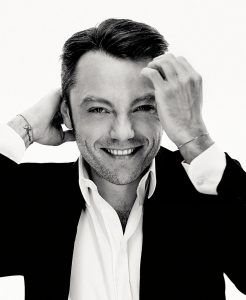
An Italian singer-songwriter and musician who has captivated audiences around the world with his powerful voice and emotive lyrics. Born in Latina, Italy, in 1980, Tiziano showed a passion for music from a young age, learning to play piano, guitar, drums and composing his own songs. In 2001, he released his debut album, “Rosso Relativo”, which achieved immediate success in Italy and Europe.
The album catapulted him to fame, establishing him as one of the new pop artists of the Italian music scene. Since then, Ferro has released six studio albums, all of which have met with great critical and commercial success and millions of copies worldwide. His songs often explore themes of love, loss, vulnerability, and the search for identity. His music is known for its emotional honesty and ability to connect with listeners of all ages. Ferro has won numerous awards for his music, including the prestigious San Remo Award, one of Italy’s most important musical events.
In addition to his musical success, Ferro is also known for his activism on LGBTQ+ rights. In 2010, he came out as gay, becoming a visible figure for the LGBTQ+ community in Italy. She has spoken openly about her personal experience and has used her platform to advocate for equality and acceptance.

German-Canadian singer and songwriter known for her indie pop and alternative rock music. She gained international recognition with her debut single “No Roots,” released in 2016. The song became a massive hit, reaching the top of the charts in several countries and earning her widespread acclaim. “No Roots” was inspired by Merton’s nomadic upbringing, as her family frequently moved from place to place during her childhood.
In January 2017, Alice Merton released her debut EP titled “No Roots,” featuring the titular single along with other tracks. The EP further solidified her presence in the music industry and garnered positive reviews from both critics and fans.
Later in 2019, she released her debut studio album, “Mint” that includes songs like “Lash Out” and “Funny Business” that demonstrate her unique blend of catchy melodies and thought-provoking lyrics. Her last and most recent album is from 2022 “S.I.D.E.S.” among which shines the songs “100 Stories” that, in her own words, deals about escaping the little bubble your world became and give a chance to all that is out there.
A distinctive and powerful voice, with music that explores themes of identity, self-discovery, and independence.
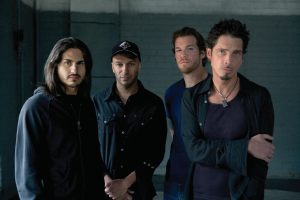
Since time immemorial, the history of rock has been nourished by the so-called “Super groups”; bands whose members previously knew success and suddenly their members are ready for a new musical adventure with other celebrities.
The 2000s were not far behind in this modus operandi and Audioslave quickly became one of the most important groups of their generation. The group formed by Chris Cornell, Tom Morello, Brad Wilk and Tim Commerford knew how to mix the best of their “Mother Groups” Soundgarden and Rage Against The Machine in songs like “Cochise”, “Like a Stone” or “Doesn’t Remind Me”.
Chris Cornell’s voice and charisma plus Tom Morello’s abrasive guitars served as an influence on dozens of groups that came later. More than a super group, Audioslave is a Dream Team.

Paula Cole burst onto the music scene in the 1990s with her unique voice and eclectic style, which blended elements of pop, folk, soul, and R&B. Her debut album, “Harmonia,” released in 1994, catapulted her to fame thanks to hits like “Where Have All the Cowboys Gone?” and “I Don’t Want to Wait.”
Her collaboration with Peter Gabriel during the 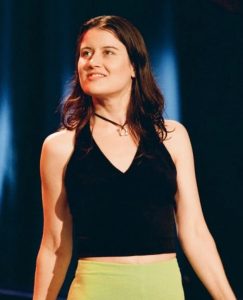 “Secret World Tour” of 1993-1994, and then on the song “River” in 1997 took her to an even wider audience and cemented her position as one of the most talented artists of her generation.
“Secret World Tour” of 1993-1994, and then on the song “River” in 1997 took her to an even wider audience and cemented her position as one of the most talented artists of her generation.
Their music, often introspective and with lyrics loaded with meaning, resonated with an audience looking for more than just superficial pop.
Cole went on to release successful albums over the years, such as “This Fire” (1998) and “Courage” (2007), which explored themes such as love, loss, and faith. He also released the albums “Raven” in 2013 and “Ballads” in 2016, both funded through the Kickstarter platform.
Most recently, in March 2024, she released the album “Lo,” where she wrote all the songs as a way to navigate her newfound confidence after life’s indelible blows. Weaving the personal with the universal, she wrestles with questions of identity and intimacy, history, and the collective failure to learn from it, ultimately showing that the album is a window into her own psyche.
A unique and unrepeatable artist, who has left an indelible mark on music and whose talent, versatility and commitment to authenticity make her an inspiring figure for new generations of musicians.
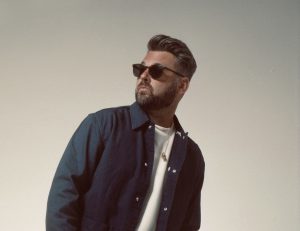
Richard Andrew Conte, known by his stage name Outasight, is an American singer-songwriter, rapper, and record producer hailing from Yonkers, New York.
With an infectious fusion of Soul Pop, Hip Hop, and Funk, Outasight’s music has left an indelible mark in various realms, from countless ad campaigns to film trailers and sports promos. His signature style consistently delivers unforgettable, larger-than-life hooks, infusing any project with fresh style, swagger, and feel-good energy!
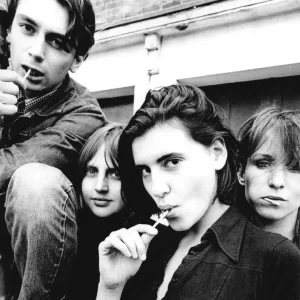
Elastica was a British alternative rock band formed in London in the 90s, it’s sound blended elements of punk rock, new wave, and Britpop, creating a unique and energetic style.
Formed by lead vocalist and guitarist Justine Frischmann, guitarist Donna Matthews, bassist Annie Holland and drummer Justin Welch, Elastica released their self-titled debut album, “Elastica” in 1995. The album received critical acclaim and achieved commercial success, reaching number one on the UK Albums Chart with hits such as “Connection,” “Stutter,” and “Line Up.”
Following the success of their debut album, 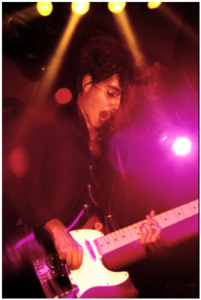 Elastica released several more singles, including “Waking Up” and “How He Wrote Elastica Man,” before releasing their second album, “The Menace,” in 2000. However, the album did not achieve the same level of success as their debut, and the band dissolved shortly after its release due to internal conflicts and artistic pressures.
Elastica released several more singles, including “Waking Up” and “How He Wrote Elastica Man,” before releasing their second album, “The Menace,” in 2000. However, the album did not achieve the same level of success as their debut, and the band dissolved shortly after its release due to internal conflicts and artistic pressures.
Despite their relatively short career, Elastica left a lasting impact on the alternative rock and Britpop scenes. Their music was characterized by its infectious energy and Frischmann’s sharp songwriting, addressing themes of love, relationships, and modern life.
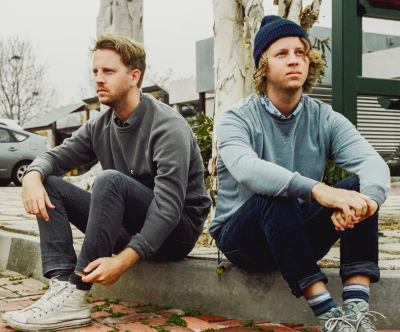
A musical project that carries in the blood both the Sun and the California Coast (its name in fact, pays homage to the town of Cayucos), full of light and cheerful sounds reminiscent of the Pop music of the 60’s but mixing production techniques of the 21st century.
Originally called Oregon Bike Trails, Cayucas is a duo consisting of twins Zach and Ben Yudin, who also join Banah Winn, Casey Wojtalewicz, and Christian Koons in their concerts.
Up until now they released 4 albums: “Bigfoot” a set of 8 songs with a sound purely associated with the Californian beach, “Dancing at the Blue Lagoon” that contains more emotional and complex songs, “Real Life” that takes a purely Pop sound and “Blue Summer” with a slightly more nostalgic sound and a return to the initial roots of the California of their childhoods.
A band that still has a long road ahead (It started in 2011), but that is already among the most select of International Indie-Pop.

KARRA is an acclaimed recording artist, songwriter, and vocal producer. She is widely known for her top selling vocal sample packs on Splice with millions of downloads, as well as her collaborations with some of the biggest Dj/Producers in the industry.
Karra’s musical journey began in her hometown of Jersey Shore, where she honed her vocal skills under the guidance of her mother, a vocal coach and her biggest musical influence. Initially focused on singing and songwriting, Karra eventually delved into the art of vocal production, a skill that would set her apart in the years to come.
 The song “Platinum Hearts”, is cited by her as her personal favorite as it’s the one that started all.
The song “Platinum Hearts”, is cited by her as her personal favorite as it’s the one that started all.
“This song will always hold a special place in my heart. It’s crazy to think back and look at all the roads this one song paved for me in EDM. It’s such a blessing.“
Her music has amassed over 1 Billion streams worldwide, and has accumulated over 300,000 fans across all social platforms. KARRA has made a name for herself through her educational yet entertaining content documenting her creative process, career, and life. This led to the creation and success of iamkarra.com, where she sells tools for music creators to assist them in honing in their craft, and finding their signature sound.
Curiously enough, after 10 years in the industry, doing collaborations, the millions of vocal samples sold, and teaching thousands of people how to create music online, she finally made an album in March 2024: The Beauty and the Boss.
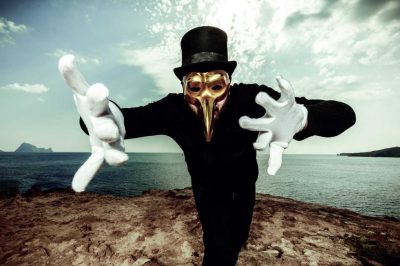
Claptone is an electronic music duo, consisting of German DJ and producer Clap and English producer and vocalist Tone. They are usually recognized for wearing a golden-billed mask, similar to the Doctors of the medieval Plague, and white gloves, so their identity remains a mystery, apart from being from Berlin.
His initial leap to fame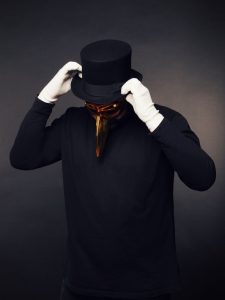 was hand in hand with the single “No Eyes” ft. Jaw, which reached number one on the UK Dance Chart in 2013. Since that time, they released several singles and four albums, Charmer (2015), The Masquerade (2016), Fantast (2018) and Closer (2021).
was hand in hand with the single “No Eyes” ft. Jaw, which reached number one on the UK Dance Chart in 2013. Since that time, they released several singles and four albums, Charmer (2015), The Masquerade (2016), Fantast (2018) and Closer (2021).
Their music is generally classified as House Music, specifically a mix of Deep House, Classic House and Tech House. They often incorporate elements of disco, funk and soul into their music as well. Their live performances are dynamic to s and energetics, usually incorporating visual elements such as extravagant dancers, flamethrowers and, of course, masks for the entire audience.
“I feel like people love stories, that hasn’t changed in centuries. They love myths. They love to be intrigued. They love to enter a different world.”
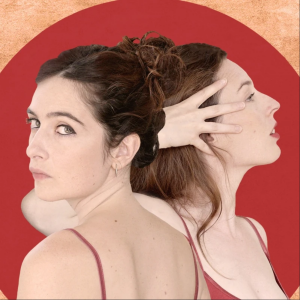
After a first and notorious album, “Mangroves”, the Rovskis sisters return with a new one: “La Proie est reine”. Listening to it one can imagine two sisters, two warriors of poetry, two women on the run from a tribe. In any case, their singing is like a spell and the bow of the violin as if it were a magic wand.
Combining the organic of the instruments with electric keyboards and loops, these urban Amazons Sonia and Olive have healed their wounds and put all their skill at the service of this new album frustrating the obvious, uniting and crushing their differences to invent a common language.
instruments with electric keyboards and loops, these urban Amazons Sonia and Olive have healed their wounds and put all their skill at the service of this new album frustrating the obvious, uniting and crushing their differences to invent a common language.
Between March 21 and 29 of 2023 they will be performing in different stages of Chile within the framework of the “Jour de la Francophonie” organized by the French Institute.
Two twin sisters. Dissimilar. In search of new lands to discover, explore and flourish.
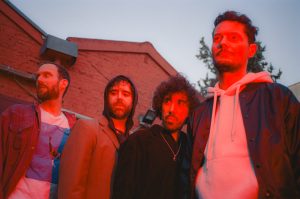
Hailing from Paris, Stuck in the Sound has solidified their place as one of the most dynamic and innovative bands in the indie rock scene. Since their formation in 2002, this quartet has been captivating audiences with their eclectic blend of garage rock, post-punk, and electronic elements. Their music, inspired by their love for Nirvana, the Pixies and Sonic Youth, is characterized by infectious hooks, driving rhythms, and introspective lyrics that resonate with listeners around the world.
The band’s career has been marked by critical acclaim and a dedicated fanbase. Their breakout single “Toyboy” from their debut album “Nevermind the Living Dead” catapulted them into the spotlight, and was included in the Soundtrack of video game Guitar Hero World Tour. Subsequent albums like “Shoegazing Kids” and “Survivor” further showcased their versatility, with tracks ranging from anthemic rockers to introspective ballads.
In the beginnings of 2024, they released their last album: “16 Dreams in a Minute”, an album where they reflect on how the human conditions and weaknesses translate into personal and universal challenges. The sixteen songs of the album are sixteen dreams born and evaporated in a profoundly changing world.

Missy Elliot is an American rapper, singer, songwriter, and record producer. She first gained fame in the 90s as part of the R&B group Sista, and later became a member of the Swing Mob collective along with childhood friend and longtime collaborator Timbaland, with whom she worked on projects for Aaliyah, 702, Total, and SWV.
Her solo career took off with the release of her debut album “Supa Dupa Fly” in 1997, which featured the hit singles “The Rain (Supa Dupa Fly)” and “Sock It 2 Me.”
Throughout her career, Missy Elliot has been known for her unique style and innovative music videos, which often feature cutting-edge special effects and choreography. Some of her other popular songs include “Get Ur Freak On,” “Work It,” and “Lose Control.”
In addition to her music career, Missy Elliot has also dabbled in acting and television, appearing in movies like “Honey” and “Ghostbusters” (2016) and serving as a judge on “The Voice UK” in 2019.
She is widely regarded as one of the most influential and innovative artists in hip-hop and pop music, and has won numerous awards throughout her career, including four Grammy Awards.
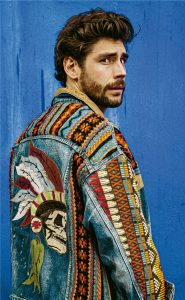
Talent, passion and an insatiable creative curiosity – these are the key drivers behind the career of the exceptional musician Alvaro Soler. These three invaluable qualities have made the German-Spanish superstar one of the most successful and popular solo artists in Europe and beyond. Having sold over two million copies of his three studio albums released to date, more than five billion combined audio and video streams, over 150 gold and platinum awards and many millions of enthusiastic fans, Alvaro Soler now presents his very personal, modern interpretation of Latin pop.
His path to stardom began with the release of “El Mismo Sol” in 2015, a song that catapulted him to international fame. The Official Videoclip of his follow up single “Sofía” reached more than 800 million reproductions on YouTube.
A true cosmopolitan, his signature sound – somewhere between passionate emotionality and instantly gripping pop with Latin genre influences – inspires a global audience between Buenos Aires and Berlin, Stockholm and São Paulo. ‘My music is about deep feelings and positive vibes. Even if you don’t necessarily understand the Spanish lyrics, the meaning of the songs is often revealed just by the groove, through the sounds and through the good energy that these tracks convey,’ says Alvaro about his music.
Beyond his musical talent Álvaro speaks seven languages (Spanish, Catalan, English, German, Italian, French and Japanese), has graduated in Industrial Engineering and Design at the ELISAVA in Barcelona.
He also collaborated with Morat, performing in the song “Yo contigo, tú conmigo” for the film Despicable Me 3, (“Gru, mi villano favorito 3”). He also voices Camilo Madrigal in the Italian and German dubbed versions of the 2021 Disney film Encanto.

The music of Los Angeles-based multi-instrumentalist and composer Nailah Hunter opens gateways into magical worlds. Shimmering with dulcet harp tones and dreamy electronics, her first debut EP Spells was released by LA’s acclaimed Leaving Records in May 2020 and described by Rolling Stone as “one of the best recent releases of its kind”.
Nailah was born in Manhattan and raised in LA – the daughter of a Belizean pastor – playing drums and acoustic guitar in her dad’s church band and singing in its choir. As a teenager, her growing interest in artists like Erik Satie and Alice Coltrane and the soundtracks of Miyazaki films began to crystalize into delicately ethereal musicality. A key turning point came aged 19 when she received a baby harp as a gift while she was already a student at CalArts, developing a keenly trained compositional sense and a perfectly smoky singing voice.
Today Nailah hosts a monthly NTS radio show, Astral Garden, and has collaborated with Lyra Pramuk, No Joy, John Carroll Kirby, and Bing and Ruth. In June 2020, she released the standalone single “Black Valhalla” to raise funds for the Loveland Foundation, a charity providing therapy to young black girls. Not long after, Nailah reimagined Radiohead’s original track, “Talk Show Host“, which found broad recognition.
In 2021, her tranquil sound led her to write Sleeping Sea, a sleep-aiding soundscape album as part of Endels’ collaborative series with Leaving Records. Continuing her way into soundtracks, in 2022, Nailah featured on an original score for The Lazarus Project for Sky TV series by accomplished composer Ben Lukas Boysen. Nailah has written soundscapes for NIKE, Union Station in LA, and VUE TV, with her most recent work being a soundtrack for a digital novel for The Quest of Evolution. In addition, her collaborative track ”Lua” was recently placed in an Apple campaign.
More recently, she released the album Lovegaze in January 2024, a bewitching testament to the resiliency of the natural world.
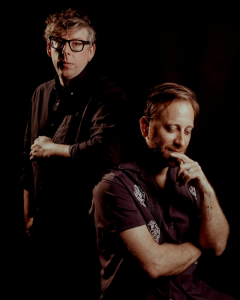
It was the year 2001 when Dan Auerbach was trying to record a demo that would allow him to take his music to other cities, Patrick Carney made available the equipment and his basement to record. But the rest of the support band never showed up, and so the now famous duo was formed: The Black Keys with Dan Auerbach on Guitar and Vocals and Patrick Carney on Drums and Production.
The group’s style reflects a passion for Blues and Garage Rock, flaily exploiting influences from the big names of the 60s and early 70s.
As in his origins in the home basement, rawness and imperfections are part of his compositions, many of them recorded in a single take directly at the studio and without previous work.
Throughout their careers, the group received 7 Grammy Awards and 4 of their singles reached the top of the charts. As if that were not enough, they are vastly recognized by their peers: Axl Rose, Robert Plant (Led Zeppelin), Jonny Greenwood (RadioHead) or Kirk Hammett (Metallica), among others, have publicly declared themselves as fans of the band.

Weyes Blood, the musical moniker of Natalie Mering, embarked on her artistic journey with a penchant for crafting ethereal soundscapes that transcend traditional genre boundaries. Emerging from the Los Angeles indie scene, her early work drew attention for its dreamy, otherworldly quality.
Her haunting vocals and introspective lyrics hint of an unique musical vision, setting the stage for her evolution into one of the most innovative voices in contemporary indie and psychedelic folk.
Weyes Blood’s breakthrough came with her critically acclaimed album “Front Row Seat to Earth” with songs like “Diary”, “Seven Words” and “Do you Need my Love” a mesmerizing exploration of both personal and universal themes. Merging elements of folk, pop, and orchestral arrangements, the album showcased Mering’s ability to create a sonic experience that is both nostalgic and forward-thinking. The ethereal quality of her music, coupled with introspective and thought-provoking lyrics, resonated with listeners, establishing Weyes Blood as a trailblazer in the indie music scene.
With each new release, she pushes the boundaries of her craft, leaving an indelible mark on the indie landscape and inspiring a new generation of musicians to explore the limitless possibilities of sound.

Prince Royce has become a prominent figure in the music industry with his enchanting Bachata sound. Hailing from the Bronx, he has masterfully fused traditional Bachata rhythms with modern influences, creating a fresh and irresistible style. His music, characterized by its heartfelt lyrics and passionate melodies, has won the hearts of fans worldwide and established him as a leading artist in the Latin music scene.
Success has been a constant companion for him, with numerous chart-topping hits and multi-platinum albums, he has not only gained commercial success but also critical acclaim. His ability to effortlessly switch between English and Spanish lyrics has broadened his international appeal, making him a global sensation.
He has earned numerous awards and nominations throughout his career. His accolades include multiple Billboard Latin Music Awards, Latin Grammy nominations, Billboard Music Awards nominations and a host of other honors.
As he continues to evolve and explore new musical genres, Prince Royce’s future looks promising, with fans eagerly anticipating more captivating music and groundbreaking collaborations.

A globally renowned sitar virtuoso, Anoushka Shankar has left an indelible mark on the world of music with her mesmerizing compositions. Her music beautifully weaves the tapestry of Indian classical traditions with a contemporary flair, offering a captivating blend of East and West.
Daughter of the legendary Ravi Shankar, she has effortlessly continued her father’s legacy while carving out a distinct musical path of her own. She is also half-sister of American singer Norah Jones, with whom she appears in concerts and videos regularly.
Anoushka is a strong activist working with multiple causes and charitable organizations, in particular supporting women and refugees; while also being an advocate for animal rights.
Her numerous albums, marked by their innovation and fusion, have received critical acclaim and multiple Grammy nominations. She participated on the scoring of films like Anna Karenina (2012), the restoration of Indian Film Classic Shiraz: A Romance of India, and the 2017 British Film Victoria & Abdul.
Anoushka has effectively introduced Indian classical music to a broader global audience through her collaborations with artists from various genres, ensuring that the rich traditions she represents remain vital and contemporary. As she continues to evolve and explore new musical horizons, her future appears promising and exciting, promising to deliver more exceptional compositions and cultural influences that transcend borders and generations.
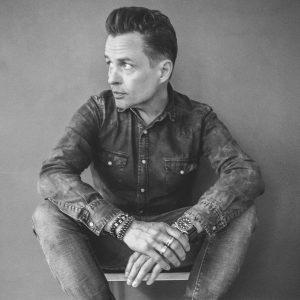
In his early days, StoneBridge created Sweden’s first DJ/Remix company, SweMix. He then turned a basement operation into a hugely successful record label & brand and as part of this StoneBridge was responsible for several worldwide hits that earned him international acclaim.
His prolific musical output has led to three studio albums. StoneBridge’s debut LP came in 2004 with the arrival of ‘Can’t Get Enough’, which garnered international acclaim among clubbers & the world’s music press. He then returned to the studio to complete the next album, ‘Music Takes Me’ which featured massive hits like ‘SOS’, ‘You Don’t Know’ & ‘Close To Heaven’. His third artist album ‘The Morning After’ which was released in 2010 was described by StoneBridge as his ‘musical chef d’oeuvre’.
His music is a regular presence on the airwaves, appearing in online radio networks such as BBC Radio 1, Sirius XM & Kiss FM. He currently hosts his own radio show on Sirius XM/BPM, broadcasting to millions every Saturday throughout North America.
In addition to his busy studio, radio & touring commitments StoneBridge also runs his own record label Stoney Boy Music which was established in 1997 & boasts early releases from future stars.
Most recently, he released the single “Too Late” featuring Kiyoné Shorter.
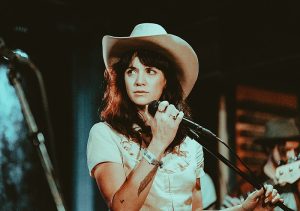
Nikki Lane is an American singer-songwriter and musician from South Carolina (USA). She is usually referred to as the First Lady of the Outlaw-Country, due to her somewhat punk attitude.
Her music is known for blending Classic Country, Rock & Roll, and Blues. She has been compared to that of Loretta Lynn and Patsy Cline and she has toured extensively throughout the United States, Europe, and Australia. In addition to her solo work, she has collaborated with a variety of other musicians, including Lana del Rey, Jonny Fritz, The Black Belles, and The Yawpers.
Fashion is also part of her profile, she worked as a fashion designer and launched her clothing line, High Class Hillbilly, whose designs have been featured in publications such as Vogue, Elle and Marie Claire.
She has released four studio albums, Walk of Shame (2011), All or Nothin’ (2014), Highway Queen (2017), and most recently, Denim & Diamonds (2022).
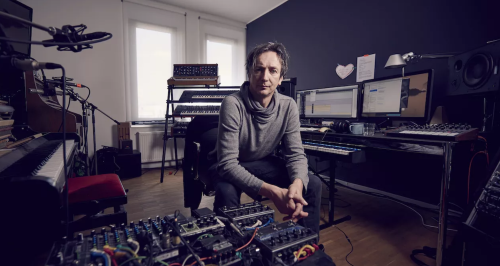
The experimental pianist and composer Volker Bertelmann, also known as Hauschka, calls himself a “sound searcher”. He puts table-tennis balls in his piano’s sound box, between the strings he clamps rubber erasers, drawing pins and much more.
The sounds Bertelmann coaxes out of his prepared piano in this way remind you of an exotic drum or an electronic effects device. But in his newest works, the grandmaster of the pianistic mood landscape is now opening up some quite different worlds of sound.
Every faithful Hauschka fan will always recognize the essential features of his music, because even when writing for an orchestra, the four cornerstones of Bertelmann’s musical world are the same: “beauty, ephemerality, melancholy and absurdity”.
In 2022 he received an Oscar for Best Original Score for his work composing the soundtrack of Netflix’s film “All Quiet on the Western Front”.
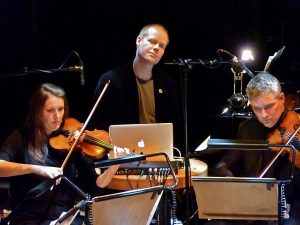
A renowned contemporary composer and musician, born in the equally famous city of Hamelin, West Germany. Not having much to do with Flutes and small rodents, Max Richter is still widely recognized for his contributions to classical music, and several different styles like minimalism, post-minimalism, experimental, and neoclassical; all of which seem to blend with ease on his creations.
Along his extensive career he produced numerous solo Álbums, Films & TV scores, like his groundbreaking composition “Memoryhouse” (2002), his album “The Blue Notebooks” and the scores of “Waltz with Bashir” (2008) and “Shutter Island” (2010). Most recently his work “On the nature of Daylight” was included in the Series “The Last of Us” and “The Handmaiden’s Tale”.
He usually collaborates with various artists, including musicians, choreographers, and visual artists, to create multidisciplinary works that push the boundaries of classical music. One of his most ambitious projects is “Sleep” (2015), an eight-hour-long composition intended to be heard while sleeping.
A widely acclaimed artist who garnered both the appraise of critical and a prominent base of fans who appreciate his innovative approach to music and his ability to evoke deep emotions through his compositions.
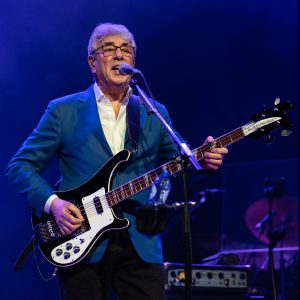
In the vibrant 1960s, Graham Gouldman took his first steps into the world of music as part of The Mockingbirds. Although the band did not achieve the expected fame at the time, Gouldman proved that his talent was unquestionable, and he would soon find his place in musical history.
His skill as a songwriter and songwriter led him to create hits that resonated throughout the 1960s and 1970s, contributing to the repertoire of iconic bands such as Herman’s Hermits, The Yardbirds (whose influence extends to legendary artists such as Eric Clapton, Jeff Beck, and Jimmy Page), The Hollies, and 10cc. However, his reach does not stop in the past, as he has been able to adapt and reinvent himself, collaborating with contemporary artists of the urban genre such as Doja Cat, proving to be a true master of the craft.
At 78, Gouldman’s legacy continues to be revered by a new generation of musicians. His timeless compositions continue to be reinterpreted by renowned artists such as Pixies and Morrissey, proving that his influence endures through time and remains relevant in today’s music landscape. Gouldman is a true “all-rounder” in the music world, whose creativity and talent have left an indelible mark on rock history and beyond.

ITZY is a South Korean girl group formed by JYP Entertainment and consisting of five members: Yeji, Lia, Ryujin, Chaeryeong, and Yuna. The group debuted on February 12, 2019, with their single album “IT’z Different,” which included the title track “Dalla Dalla.”
Since their debut, ITZY has quickly gained popularity both in South Korea and internationally, thanks to their catchy music, eye-catching choreography, and unique style. Their youthful energy and positive messages in their songs have resonated with a wide audience, especially among the youth.
Some of ITZY’s notable hits include songs like “ICY,” “Wannabe,” and “Not Shy,” which have received recognition and awards on music shows and have garnered millions of streams on streaming platforms.
ITZY has proven to be a versatile and talented group, capable of pulling off a variety of concepts and musical styles. In addition to their music career, they have also appeared on variety shows and have been ambassadors for various brands, further solidifying their status as one of the most influential girl groups in the South Korean entertainment industry.

Having become one of the most popular and significant groups of K-Pop, this band started back in 2015 with its single “Trespass” and in a short time they developed an activity as intense as their music.
Their Music combines Hip Hop, Dance Music and Pop with an aggressive and potent edge that became their trading mark and got them an immense fandom around the world. Just as they say: “Let the haters hate”
The songs of the group broke several record in platforms, counting millions in YouTube and Social Media with several of their singles reaching Billboard’s Top 5. Over the years they had Tours around the world (Always including South America) and they’ve been part of Films, Reality Shows and TV Dramas.
Monsta X showed that K-Pop transcends the Language Barrier.
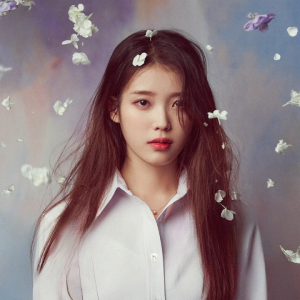
IU, whose real name is Lee Ji-eun, has become a true icon in South Korea and around the world. Known for her sweet yet powerful vocals, touching songwriting, and natural charisma, IU has built a career that transcends genres and generations. She began her career as a teenage solo artist, but her unique blend of K-pop, indie sensibilities, and personal storytelling has made her one of Korea’s most beloved artists. From heartfelt ballads to upbeat anthems, IU’s songs explore themes of love, loss, and self-discovery, resonating deeply with fans who find comfort and inspiration in her music.
 Her success goes far beyond music. IU is also a celebrated actress, starring in hit dramas like Moon Lovers: Scarlet Heart Ryeo and Hotel Del Luna, where her performances showcase her range and depth as an artist. Her portrayal of complex, multi-dimensional characters has won her acclaim and expanded her influence across the entertainment industry. IU’s dual talents as a musician and actress have helped her create a rare and special bond with her fans, who admire not only her artistic abilities but also her humility, kindness, and commitment to philanthropy.
Her success goes far beyond music. IU is also a celebrated actress, starring in hit dramas like Moon Lovers: Scarlet Heart Ryeo and Hotel Del Luna, where her performances showcase her range and depth as an artist. Her portrayal of complex, multi-dimensional characters has won her acclaim and expanded her influence across the entertainment industry. IU’s dual talents as a musician and actress have helped her create a rare and special bond with her fans, who admire not only her artistic abilities but also her humility, kindness, and commitment to philanthropy.
IU’s influence on Korean pop culture is monumental. Her albums, such as Palette and Lilac, showcase her evolution as both a musician and a person, touching on themes of growth and change that resonate across all ages. Songs like “Good Day,” “Blueming,” and “Eight” have become instant classics, cementing her status as a timeless artist. IU’s music is distinct for its thoughtful lyrics and nuanced emotional expression, offering listeners an intimate connection to her world. She has carved out a unique place in K-pop, proving that a solo artist can stand just as tall as the biggest groups in the industry.
To this day, IU remains a beloved figure in Korea and beyond, admired for her artistic integrity and versatility. Her journey from teenage sensation to accomplished musician and actress has made her a role model for countless young fans. IU’s music, honesty, and dedication continue to inspire audiences worldwide, solidifying her place as one of the most influential artists in modern Korean music.

American singer, songwriter and music producer from Massachusetts, USA. She became famous in 2014 with her song “All About That Bass” which topped the charts in several countries and became a worldwide hit. Curiously, this song was prepared to be given to other artists, was rejected among others by Adele and Beyoncé, until reaching Epic Records where they were surprised by herself and decided to sign a contract and began the production of her album.
Her musical style is a mix of pop, R&B and soul, and both her lyrics and her actions are usually about topics such as female empowerment, self-esteem and self-love.
Her song “No” became an anthem to women facing of the incessant harassment of which they are usually victims. The videoclip of her single Me too was taken down from social media by herself after seeing the Photoshop modifications to here body, forcing later to upload and promote the real version.
Trainor has also been a judge on the TV show “The Four: Battle for Stardom” and has acted as a coach on the British version of “The Voice”. Some of her themes were included in animated films such as “Smurfs: The Lost Village” and “The Peanuts Movie”.

BTS, the global phenomenon from South Korea, has reshaped the pop landscape with their groundbreaking music, dynamic performances, and heartfelt message. Comprising seven members—RM, Jin, Suga, J-Hope, Jimin, V, and Jungkook—BTS combines hip-hop, pop, and R&B to create a sound that transcends language and cultural barriers. Known for their intense choreography and unparalleled stage presence, BTS’s artistry is only matched by their dedication to connecting with their fans, the “ARMY.” Their songs tackle universal themes like self-love, mental health, and personal growth, resonating deeply with millions worldwide and marking a new era of meaningful pop music.
Since their debut in 2013, BTS has consistently pushed creative boundaries. Albums like Wings, Love Yourself, and Map of the Soul reflect their evolution from rookies to global superstars, with lyrics that address personal struggles and dreams. Songs like “Dynamite,” “Blood Sweat & Tears,” and “Spring Day” showcase their versatility and emotional range, while their collaborations with artists like Halsey and Coldplay illustrate their global reach. Through their music and philanthropic work, BTS has inspired fans to pursue their dreams and embrace their true selves, creating a fanbase that is not only devoted but profoundly connected to the group’s journey.
Beyond music, BTS has influenced global culture, from fashion to social activism. They’ve made speeches at the United Nations, advocating for youth empowerment, and partnered with UNICEF in the “Love Myself” campaign, which supports mental health initiatives worldwide. Their impact reaches beyond the charts, as they continue to break stereotypes and redefine what it means to be a modern artist. BTS’s success is proof of the power of authenticity and resilience, showing the world that pop music can be both commercially successful and emotionally resonant.
BTS remains a trailblazing force in the music industry, uniting fans across continents and cultures. Their authenticity and commitment to meaningful art have turned them into more than just global superstars; they are cultural icons who inspire millions to embrace individuality and spread kindness. As they continue to evolve, BTS’s legacy grows stronger, marking them as one of the most influential groups of their generation.
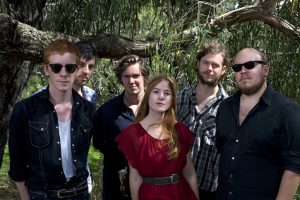
From Townsville, Australia a band jumped to worldwide fame, only to fizzle out as unexpectedly as they arrived. Formed in 2005, the band consisted of members Jordan Ireland, Rohin Jones, Bree Tranter, Mark Myers, and Harry Wales. They gained international recognition for their heartfelt and atmospheric music, marked by intricate harmonies, delicate instrumentation, and introspective lyrics.
The Middle East released their debut EP, “The Recordings of The Middle East” in 2008, which showcased their signature sound and garnered critical acclaim. The EP included the standout track “Blood,” which became a breakthrough song for the band and received significant attention. It was praised for its haunting melodies and emotional depth.
Short time later, in 2010, The Middle East released their highly anticipated debut album, “I Want That You Are Always Happy.” The album featured re-recorded versions of songs from their EP, as well as new material. It further established the band’s reputation for crafting beautiful and introspective folk music. Tracks like “Hunger Song” and “Jesus Came to My Birthday Party” resonated with listeners and showcased the band’s ability to create evocative, layered compositions.
Despite their critical success, The Middle East announced their breakup in 2011, shortly after the release of their album. The members cited creative differences and the strain of touring as reasons for the disbandment.
Although their time as a band was relatively short-lived, their music continues to be cherished by fans of indie folk and remains a testament to their talent and artistry.
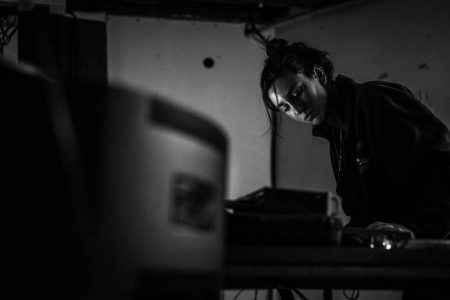
Film Music Composer, Music Producer and DJ with North London origins, she began her musical training in Classical Flute and Piano at the Junior Guildhall School of Music and Drama and then her studies in Jazz at the Junior Royal Academy of Music.
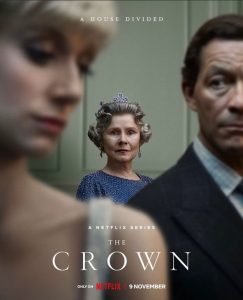
Consequently with her education, the pieces created by her slowly evolved into Neo-Classicism and Minimalism, giving us a picture of a technical-musical environment of Edinburgh and Europe.
Madison’s work has been included in several Short Films such as Princess and The Flying Gold of Arabuko (nominated for the BIFA and BAFTA awards respectively). More recently she participated in the Musical Composition of Season 5 of “The Crown“.
In addition to her film works, she has presented a Vinyl EP with producer dBridge called “Made in Silence” (2022), and another one made in solitaire: “Seasons” (2021).
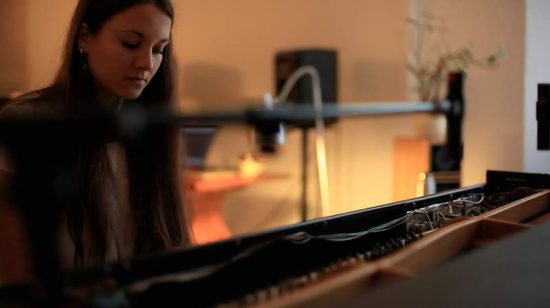
It’s the voice, original and pure, that reaches you first, wordlessly piercing a soft cloud of synths. Soon, she plummets, ever more passionate and perfectly balanced, singing about despair and liberation, loss and salvation, and charting an elegant and wonderful melody.
Morgenstern’s broad tastes no doubt have something to do with her upbringing as the independently-minded daughter of two orchestral musicians, one German, one Bulgarian. She began playing piano aged 5 before embarking on a promising ballet career, but when this was prematurely cut short by injury at the age of 15, she returned again to writing and performing music. A lingering love of Tchaikovsky, Prokofiev and Stravinsky was tempered by a youthful passion for punk, metal and, later, goth, and though it might be presumptuous to point to individual instances, each of these – along with a robust hunger for all sorts of other music, whether older or more contemporary – has in some way colored her work since.
Her compelling live performances led to concerts across Europe with artists including Ólafur Arnalds and Max Cooper, as well as at festivals and prestigious venues, from Iceland Airwaves to the Reeperbahn Festival at the Elbphilharmonie Hamburg.
Most recently she was hired to co-compose the score to one of Netflix’s priority drama series of 2022, The Empress, and additional studio collaborations with artists such as Casper, Balmorhea and Aukai have emerged since Chameleon’s release.

Hania Rani is one of the most successful and intriguing pianists in the world right now, with sold out shows in London, Berlin, Tel Aviv and a sell-out Canadian tour.
A transcendent talent, she is a classically trained pianist able to evoke the sparseness of her native Polish mountain landscape, while teasing enough latent energy to keep you on the edge of your seat.
Rani grew up in Gdansk (Poland), initially inspired to study classical music, she was introduced to jazz and electronics at music school, widening her interests and as she puts it, ‘mixing Chopin & Shostakovich with Dave Brubeck and Moderat’. Other inspirations include composers such as Max Richter, Esbjorn Svensson, Miles Davis, Nils Frahm, Murcof, Portico Quartet, Radiohead, and even The Beatles.
‘It’s what connects all these artists that inspire me, their special approach to music and sound. For me, they have big hearts and huge minds.’
Her debut album “Esja”, a beguiling collection of solo piano pieces that earnt her four prestigious Fryderyk Awards. Her follow-up album, “Home”, adds vocals and subtle electronics and earned her further awards.
She has composed the music for a number of movies including a Netflix series ‘Last Chance U: Basketball’ and the soundtrack for the documentary movie ‘Venice: Infinitely Avantgarde’ released in 2022.
Last October 2023 saw the light her new album: “Ghosts”.
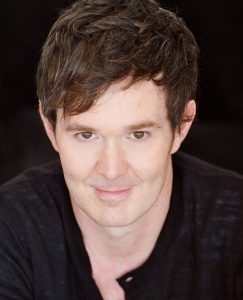
Mark Portmann’s music has been heard all over the world, his compositions are part of innumerable movies, trailers and audiovisual work. Mark’s credits as a composer include more than 300 major label album credits and 9 Grammy nominations.
Starting out as a classical piano player, Mark toured the world at a very young age with world class artists before moving to Los Angeles as session musician, arranger and producer.
As an arranger/orchestrator, Mark has worked with The London Symphony Orchestra, The Prague Symphony (over 40 recordings). He has also worked with major film stars like Tom Cruise and Drew Barrymore for some of their Films and Trailers, as well as with Music Stars like Ariana Grande, Christina Aguilera and Demi Lovato in their albums.
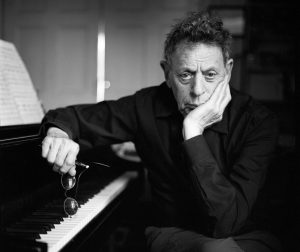
Through his operas, his symphonies, his compositions for his own ensemble, and his wide-ranging collaborations with artists ranging from Twyla Tharp to Allen Ginsberg, Leonard Cohen to David Bowie, Philip Glass has had an extraordinary and unprecedented impact upon the musical and intellectual life of his times.
Native to Baltimore, and born in 1937, Philip Glass studied at the University of Chicago, the Juilliard School and in Aspen with Darius Milhaud. He moved later to Europe, where he studied with the legendary pedagogue Nadia Boulanger and worked closely with the Sitar virtuoso and composer Ravi Shankar. Back in New York in 1967 he formed the Philip Glass Ensemble, made of seven musicians playing keyboards and a variety of woodwinds, amplified and fed through a mixer.
The new musical style he developed was eventually dubbed as “Minimalism”, despite Glass himself never liked the term and preferred to speak of himself as a composer of “music with repetitive structures”. Much of his early work is based on the extended reiteration of brief, elegant melodic fragments that weave in and out of an aural tapestry, immersing a listener in a sort of sonic weather that twists, turns, surrounds and develops.
His Music production certainly has nothing of “Minimalist”: In the past 25 years, Glass has composed more than 25 Operas, large and small; 12 symphonies; a variety of Concertos for different instruments and formations; as well as Soundtracks for Films and Documentaries.
Among his Operas should be pointed out “Einstein on the Beach”, “Satyagraha”, “Akhnaten” and “The Voyage”, among many others played throughout the world’s leading houses, and rarely to an empty seat. His catalogue of Soundtracks includes Documentaries of Jean Cocteau, the films of “The Hours” and “Kundun” by Martin Scorsese and also the Film “Koyaanisqatsi” which may be the most radical and influential mating of sound and vision since “Fantasia”.
For all this, Philip Glass is considered the first composer to win a wide, multi-generational audience in the opera house, the concert hall, the dance world, in film and in popular music – simultaneously.
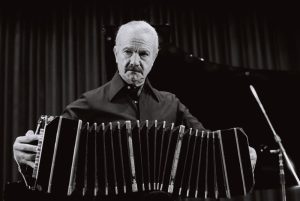
Argentinian Composer and bandoneon player, Astor Piazzolla is one of the responsible of the Renewal at Tango with masterpieces as Libertango, Oblivion, Zita . In his Music, coexist the most traditional Tango, Classical Music and Jazz, mixing their languages, techniques and styles; providing a novel and most appealing facet to his Music.
Born in Mar del Plata in 1921, he moved to New York with his parents and lived there since 1924. There he received from his father a second-hand Bandoneon as a gift, instrument that would remain tied to his figure from that moment. He studied music under the tutelage of Bela Wilda and Terig Tucci, and later in his adulthood with Alberto Ginastera in Buenos Aires and the famous pedagogue Nadia Boulanger in Paris.
Piazzolla’s career straddled between the Old and the New World. He performed as Bandoneon player in the Orchestras of Miguel Caló and Aníbal Troilo, and wrote arrangements first for the Orchestra of Troilo and then for José Basso, Miguel Caló and Francini-Pontier. He also formed a String Orchestra in Paris with musicians from the Paris Opera and with Lalo Schifrin and Martial Solal alternating on Piano.
In 1955 he founded the Octeto Buenos Aires with first line musicians as Enrique Mario Francini and Hugo Baralis (Violins), Roberto Pansera (Bandoneon), José Bragato (Cello), Aldo Nicolini (Bass), Horacio Malvicino (Electric Guitar) and Atilio Stampone (Piano). Various of the Octeto’s versions influenced heavily the future evolution of his Tango due to the rhythm and counterpoint novelties.
Some years later he also formed a Quinteto with a variable formation that would change along the years, and through which would pass musicians as Elvio Bardaro, Dante Amicarelli, Antonio Agri, Horacio Malvicino, Oscar López Ruiz, Kicho Díaz, Osvaldo Manzi and Cacho Tirao. In 1968 he composed alongside the poet Horacio Ferrer the Opera María de Buenos Aires, and an year later they would continue working composing much simpler works for the voice of Amelita Baltar such as Balada para un Loco and Chiquilín de Bachín.
The musical style of Astor Piazzolla granted him an enormous success in Europe, but generated enormous controversies in Argentina where it was always discussed whether his Music was genuinely Tango or Not. Until this day, his music sparks passions of all kinds in those hearing it, and his name remains unyielding in the summit of Music no matter the public.
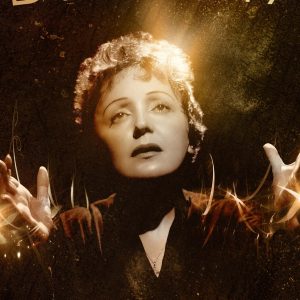
Edith Piaf, known as “La Môme Piaf” (The Little Sparrow), is an enduring icon of French music. Born in 1915, she rose from the streets of Paris to international fame, her voice capturing the spirit of a nation. Piaf’s life, filled with personal tragedies and romances, deepened the poignancy of her music, making her one of the most compelling figures in 20th-century music.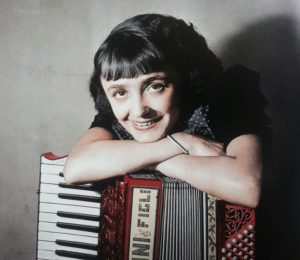
Her repertoire includes timeless classics like “Non, Je Ne Regrette Rien,”, “Paris” and “L’Hymne à l’amour,” showcasing her ability to convey profound emotion. “La Vie en Rose” became an anthem of hope post-war, while “Non, Je Ne Regrette Rien” reflects her resilience. Her songs, rich with themes of love and loss, resonated deeply with listeners worldwide.
Discovered singing on the streets in the 1930s, Piaf quickly rose to fame with the help of impresario Louis Leplée. Despite numerous hardships, including battles with addiction and personal losses, she performed at prestigious venues globally, solidifying her status as a superstar.
Edith Piaf’s legacy endures through her recordings and the countless artists she inspired. Her life has inspired films and biographies, ensuring her music captivates new generations. Piaf’s haunting voice symbolizes music’s power to express the human condition, securing her place among musical greats.
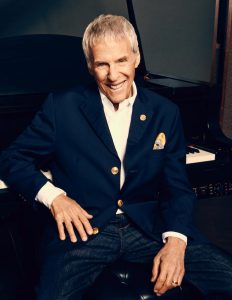
Born in Kansas in 1928 but growing up in Queens, NY, Burt Bacharach started studying Cello, Drums and Piano at the age of 12 by his mother’s insistence. He used to despise playing the Piano, for his dream at that time was to become a Professional Football Player. His small frame and his musical talent took him through a different path.
As a teenager, he ended up falling in love with Jazz and forming his own High School Band with which he gained exposure playing at parties and events. Later on he delved into music studying at the Mannes School of Music in New York City; at the Berkshire Music Center; and at the New School for Social Research, where he studied under composers Bohuslav Martinu, Henry Cowell and Darius Milhaud. He was also awarded a scholarship to the Music Academy of the West in Santa Barbara, California.
After serving in the army, he worked in Nightclubs and restaurants accompanying performers like Georgia Gibbs, Ames Brothers and Polly Bergen. In 1957, he started collaborating with lyricist Hal David and together they reached success almost immediately with hits like “The Story of My Life” and “Magic Moments”.
During several decades, he worked creating, arranging or producing songs with several talents like The Drifters, Marlene Dietrich, Jackie DeShannon, Dusty Springfield, The Carpenters , lvis Costello and most specially with Dee Dee Warwick (with whom, alongside Hal David formed a formidable team).
He also participated in several Films, composing music for movies like “Casino Royale”, “Butch Cassidy and the Sundance Kid”, the Italian film “Together” and “Arthur” and also acting in the Austin Powers movies. Several Films and Documentaries gave homage to his career along the way, as well as different Musicals like “What the World Needs Now”.
A prolific composer, producer, conductor and arranger, whose works and collaborations spawn over long decades and multitude of artists; whose awards and prizes would need a whole new page to detail. A major name in the history of Music, that left a mark in every possible area of the music and that still to this day defines and inspires musicians all over the world.
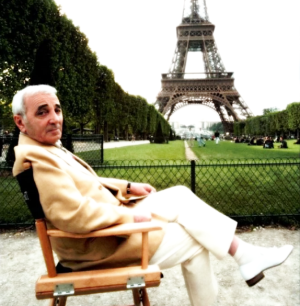
Despite being born in Armenia and having a great personal identification with his native country, his name is immediately associated with France and the classic songs of love and breakup.
His distinctive voice and versatile repertoire made
him one of the leading figures of the European music scene in the 1950s, among his music we can find songs typically of the Chanson Française but also others from Folk, Pop, Jazz, Cabaret and even Gospel.
Throughout his career he made countless compositions, such as “La Bohème”, “She”, “For me, formidable” and “Hier encore”. Several of them he even composed or sang in languages other than French, such as English, Spanish, Italian, German, Russian and of course Armenian.
Aznavour is considered one of the most influential and successful artists in French and world music. He sold more than 180 million records worldwide and was honored with numerous awards and recognitions, including the Grammy Award for Artistic Career in 1996.
In addition to his musical career, Charles Aznavour had a successful film career participating in dozens of films, both in France and Hollywood. And in 2009, he was appointed Armenian Goodwill Ambassador to UNESCO.
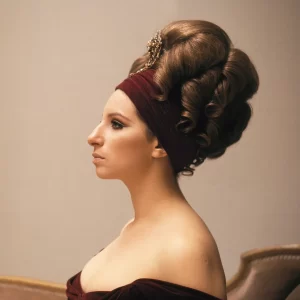
Singer, Songwriter, Actress, Director and much more. Barbra’s list of facets, activities and successes is endless and spans a career of more than 6 decades that made her an icon of American Culture.
In her musical facet, she recorded more than 70 albums, exceeded 200 million sales worldwide and received dozens of awards (2 Oscars, 10 Grammys and 5 Emmys among others). She is considered the No. 3 artist on the Billboard 200 chart of all time.
In addition to music she has had a successful career in acting, participating in about 20 films for which she received 2 Oscars, 1 Tony and several Golden Globes. Some of her best-known films include “Hello, Dolly!”, “Funny Girl”, the classic “A Star is Born” and the most recent “Meet the Fockers” and “The Guilt Trip”.
In addition to her work in entertainment, Streisand is also known for her political and philanthropic activism. She has participated in several political campaigns and has been a prominent advocate for women’s rights, civil rights and environmental protection.
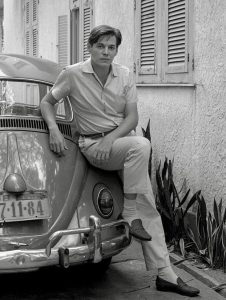
Creator alongside Vinicius de Moraes of iconic Songs, he was one of the most important icons of Brazilian music and the Bossa Nova movement. His music shows an incredible ability to weave complex harmonies into popular music, adding to his Classical Music background the Brazilian Samba and Folklore, and the sound of cool jazz.
Famous artists like Frank Sinatra, Ella Fitzgerald, Madonna and Amy Winehouse have performed the songs he created along his career. His biggest hit, “Garota de Ipanema”, is widely known around the world and is one of the songs with most covers and versions in history, being part of multitude of events like the World Cup 2014.
95 Years have passed since his birth, and his Music remains intact.
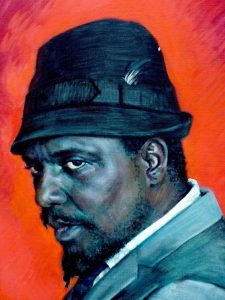
An influential Pianist and Composer who, with his style heralded the changes that would come later during the Bebop Era. Owner of a complicated and enigmatic persona, both his music and himself were the object of varied sentiment.
He reached an early recognition in the Jazz field thanks to his role as Piano Player at Minton’s Playhouse in Harlem during the 40s. Despite Swing was the most popular style at that time, Monk and several of his companions paved the way for the arrival of Modern Jazz. His pieces and compositions were so complex, even for Bebop, that he remained relatively unknown for the Big Public (not his colleagues) until a show made with John Coltrane in 1957.
From that moment on, he jumped into stardom, recorded several albums, made tours around the globe and collaborated with dozens of great artists of the time. His popularity reached such a point that he was chosen as the face for Time Magazine, one of the few musicians in history.
His life can be summarized with a phrase by him during his final days: I’m famous. Ain’t that a bitch?
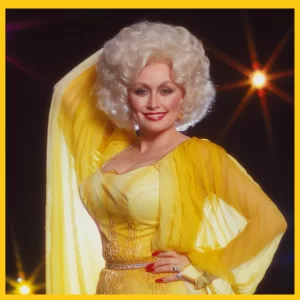
Singer, songwriter, actress, entrepreneur and philanthropist, Dolly is an incredible and versatile figure in the musical history. She is one of the most successful country music artists of all time, having sold over 100 million records worldwide.
She began her career at a young age, writing songs for other artists and appearing on local television shows. In 1967 she released her first album, “Hello, I’m Dolly”, and has since released numerous hits, including “Jolene”, “Coat of Many Colors” and “9 to 5”.
In addition to her music career, Parton has dabbled in acting, appearing in films such as “Steel Magnolias” and “Joyful Noise,” as well as producing the soundtrack for “Dumplin'” (2018) starring Jennifer Aniston.
Parton is also known for her commitment to charitable causes, actively participating in the fight against illiteracy through her charity Imagination Library. In 2020, it also donated one million dollars to help fund COVID-19 vaccine research.
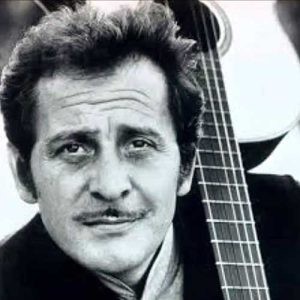
Domenico Modugno is considered the father of Italian singer-songwriters and one of the greatest European songwriters and performers of all time.
He was born on January 9, 1928 in Polignano a Mare (Bari), and inherited his passion for music from his father Cosimo. He learned to play guitar and accordion from an early age and composed his first song at the age of 15.
In 1953 he obtained his first recording contract with RCA Italiana, recording his first successes inspired by the folklore of southern Italy, such as “La Sveglietta“, “La Donna Riccia“, and the famous “Vecchio Frack“.
In 1956, he changed his record company and moved to Fonit Cetra and debuted at the Sanremo Festival with the song “Musetto“. In the same year, he published “Io, Mammeta e Tu” .
In 1958 he took part and won the Sanremo Festival with “Nel Blu Dipinto di Blu“, a song written together with Franco Migliacci. It is the consecration of Domenico Modugno among the main protagonists of the Italian and international music scene. The song soon became one of the most famous Italian songs of all time, selling over 20 million copies and reaching the top of the charts all over the world. This huge success led him to win also three Grammys Awards: “Record Of The Year“, “Song Of The Year” and “Best Artist“.
In 1959 he won again the Sanremo Festival with the song “Piove (Ciao Ciao Bambina)“, while in 1960 he reached the second position thanks to “Libero“.
After the period spent at the Fonit Cetra, in 1964 he moved to Carosello Records, recording other masterpieces such as “L’Avventura” and “Dio, Come Ti Amo“.
He acted in theathral shows and musical comedies such as “Cyrano” by Riccardo Pazzaglia and “Western Di Cose Nostre” taken from a story by Leonardo Sciascia. He also acted in movies such as “Europa di Notte” by Alessandro Blasetti, “Nel Blu Dipinto di Blu” by Piero Tellini, “Lo Scopone Scientifico” by Luigi Comencini and “Il Giudizio Universale” by De Sica.
In 1993 he recorded his last song with his son Massimo, titled “Delfini (Sai Che C’è)“.
He died on 6 August 1994 in his house in Lampedusa.
The sign that Domenico Modugno has left in the Italian music and culture is so important that today he continues to be honored and celebrated all over the world.
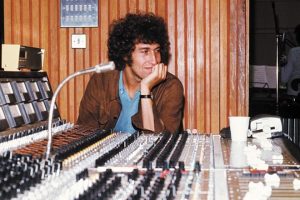
This French musician, songwriter, and producer was an instrumental force behind some of the biggest disco hits of the late ‘70s and early ‘80s. Known for his ability to craft incredible melodies and rhythms that could fill any dance floor, Vangarde’s work defined an era of music that celebrated decadence, movement, and uninhibited joy. Yet, despite his contributions, he has often remained a shadowy figure, quietly influencing the sounds of generations.
Vangarde’s career began in the late ‘60s, but it wasn’t until the ‘70s that he struck gold. Working closely with the iconic group Ottawan, Vangarde co-wrote tracks that became global sensations, including the unforgettable “D.I.S.C.O.” and “Hands Up (Give Me Your Heart).” These songs were vibrant and playful, capturing the carefree, party-centric spirit of the disco era. Vangarde’s knack for creating hooks that listeners could sing or dance to for hours helped cement these tracks as timeless dance anthems. He also worked with French disco duo the Gibson Brothers, producing hits like “Cuba,” which celebrated Latin rhythms, proving Vangarde’s versatility and global reach.
What set Vangarde apart was his ability to infuse his compositions with an international flair, combining elements from various genres to create a unique sound. His style often featured a blend of European pop, Latin rhythms, and funk grooves—a fusion that anticipated the globalized sound of contemporary dance music. But even with his success, Vangarde shied away from the spotlight, focusing instead on the creative process and letting others bask in the fame. This allowed him to maintain an air of mystery, a rare trait in an industry that thrives on visibility and celebrity.
Interestingly, Vangarde’s musical legacy has come full circle. His son, Thomas Bangalter, rose to fame as one half of Daft Punk, the pioneering French electronic duo who helped reignite interest in disco and funk in the ’90s and 2000s.
After his retirement, Vangarde moved to Bahia (Brazil), where among other projects he founded CaraivaViva, an NGO community charity which provides education through the arts for children.
In many ways, Vangarde’s influence can be felt in Daft Punk’s own work—celebrating the past while innovating for the future. Today, Vangarde’s contributions to music are gaining new appreciation, as fans and historians alike recognize him as a key figure in the golden age of disco. His songs remain iconic, a reminder of an era when music was all about liberation, rhythm, and letting go on the dance floor.
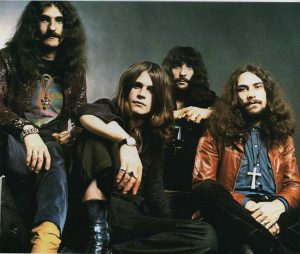
During the year of “Peace & Love”, a group of musicians decided to take a different path and embrace the darkness of a time marked by the fire of war and repression.
With an extreme sound of power-guitar and a somber ambience, their lyrics mention both God and the Devil, Sorcerers and Dark Magic, while still approaching topics as the Planet’s devastation.
Initially formed by Ozzy Osbourne, Tony Iommi, Geezer Butler and Bill Ward, the band produced such a disruption in Music that they were instantly thrown into success, top charts and World Tours. And all this despite the shivers of terror and the negative public opinion.
They are one of the transcending Bands of Rock in history, and always mentioned as one of “The Unholy Trinity” of Heavy Metal.
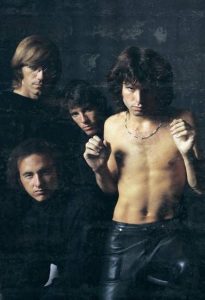
With an intoxicating, genre-blending sound, provocative and uncompromising songs, and the mesmerizing power of singer Jim Morrison’s poetry and presence, The Doors had a transformative impact not only on popular music but on popular culture.
The Doors’ arrival on the rock scene marked not only the start of a string of hit singles and albums that would become stone classics in a short time, but also of something much bigger: a new and deeper relationship between creators and audience. Refusing to be mere entertainers, the band relentlessly challenged, confronted and inspired their fans, leaping headfirst into the heart of darkness while other bands warbled about peace and love.
Morrison’s mystical command of the frontman role may be iconic, but the group’s extraordinary power would hardly have been possible without the virtuosic keyboard tapestries of Ray Manzarek, the gritty, expressive fretwork of guitarist Robby Krieger and the supple, dynamically rich grooves of drummer John Densmore.
Though they’ve had scores of imitators, there’s never been another band quite like them. And 50 years after their debut album, The Doors’ music and legacy are more influential than ever before.
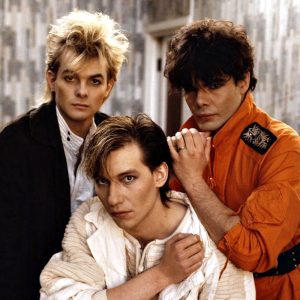
The year 2022 marks the iconic 40-year career milestone of “Alphaville”, the successful German Synth-Pop Band.
Originally formed by Marian Gold, Bernhard Lloyd and Frank Mertens, Alphaville achieved immediate success with their first single “Big in Japan” and “Sounds Like a Melody”. Both advances of their first album “Forever Young” that also contains the track of the same name that would become a classic.
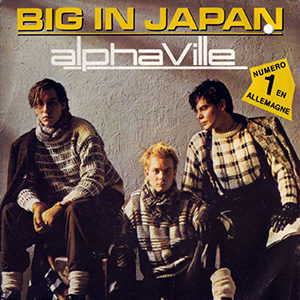 Interestingly, the band started almost luckily since, in the words of Marian Gold himself, “Nobody could really play an instrument. Music was in our minds, but we relied on synthesizers and things like that.”
Interestingly, the band started almost luckily since, in the words of Marian Gold himself, “Nobody could really play an instrument. Music was in our minds, but we relied on synthesizers and things like that.”
Throughout the 40 years of trajectory the formation has changed several times, always with Marian Gold at the head, but with the rest of the members following different paths. This did not prevent the production of 8 studio albums, 6 compilations and 3 Box Sets, in addition to single numbers and re-releases of their classics.
Last September they released the album “Eternally Yours” which contains symphonic versions of their most important classics, followed by a tour in 2023 through cities in Germany presenting the Disc.

Born Kentrell DeSean Gaulden, YoungBoy had a turbulent upbringing marked by poverty, crime, and violence. Despite facing numerous challenges, including spending time in juvenile detention centers, he found solace in music and began recording songs at a young age.
He managed to gain attention with his mixtapes, which garnered millions of views and downloads online. His breakthrough came with the release of his single “Outside Today” in 2018, which peaked at number 31 on the Billboard Hot 100 chart. Since then, he has released several successful projects, including mixtapes, albums, and collaborative efforts.
Since then, he acquired significant popularity in the rap scene for his unique style and raw lyrics: his music often explores themes such as street life, violence, relationships, and personal struggles. The theme of poverty and facing adversity, resonates with listeners who relate to his storytelling and emotive delivery.
Outside of his music career, YoungBoy has been accompanied by legal troubles, including arrests, probation violations and more than one public feud with other artists and occasional controversies. Nonetheless, he continues to be a prominent figure in the hip-hop community, known for his distinctive sound and unapologetic approach to his art.
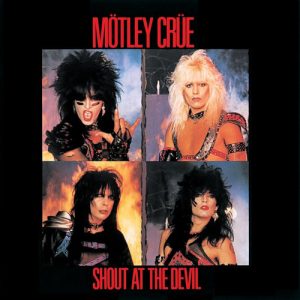
With a signature fashion of leather jackets and tight jeans, Motley Crue has been credited as one of the pioneers of the ’80s glam metal scene and is known for their energetic live shows. Owners of a hard-hitting rock and roll with a punk edge, with songs often featuring dark and controversial topics such as sex, drugs, and suicide, they rose to fame in the early 1980s with their debut album, “Too Fast for Love”.
They have since released nine studio albums, four compilation albums, two EPs and two live albums, having sold in total over 100 million albums worldwide. The band’s hits include “Home Sweet Home”, “Girls, Girls, Girls”, “Dr. Feelgood”, “Kickstart My Heart” and “Wild Side”.
As part of their “World Tour” they toured through Latin America, in Mexico DC (18/02), Monterrey (21/02), Bogotá (25/02), Lima (28/02), La Florida Chile (03/03), Sao Paulo (07/03) and Buenos Aires (09/03).
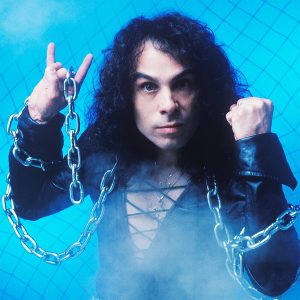
A renowned heavy metal singer and songwriter, Dio’s powerful and distinctive vocal style made him one of the most influential and respected vocalists in the heavy metal genre.
His music career took off in the late 1950s when he began performing with various rock bands. In the 1970s, he formed the band Elf, which later evolved into Rainbow.
However, it was his tenure as the lead vocalist for Black Sabbath that brought him significant fame when replacing Ozzy Osbourne. With Dio on vocals, Black Sabbath released two highly regarded albums: “Heaven and Hell” (1980) and “Mob Rules” (1981), which showcased his distinctive voice and lyrical style.
In 1982, he formed his own band, called simply “Dio.” The band achieved commercial success and released several critically acclaimed albums, such as “Holy Diver” and “Sacred Heart”.
During the 1990s and early 2000s, Dio continued to release albums and tour with his solo band. He also reunited with former Black Sabbath bandmates under the moniker “Heaven & Hell”.
Dio’s contribution to the heavy metal genre is immeasurable, and he is often credited with popularizing the “devil horns” hand gesture, which has become an iconic symbol of metal music.
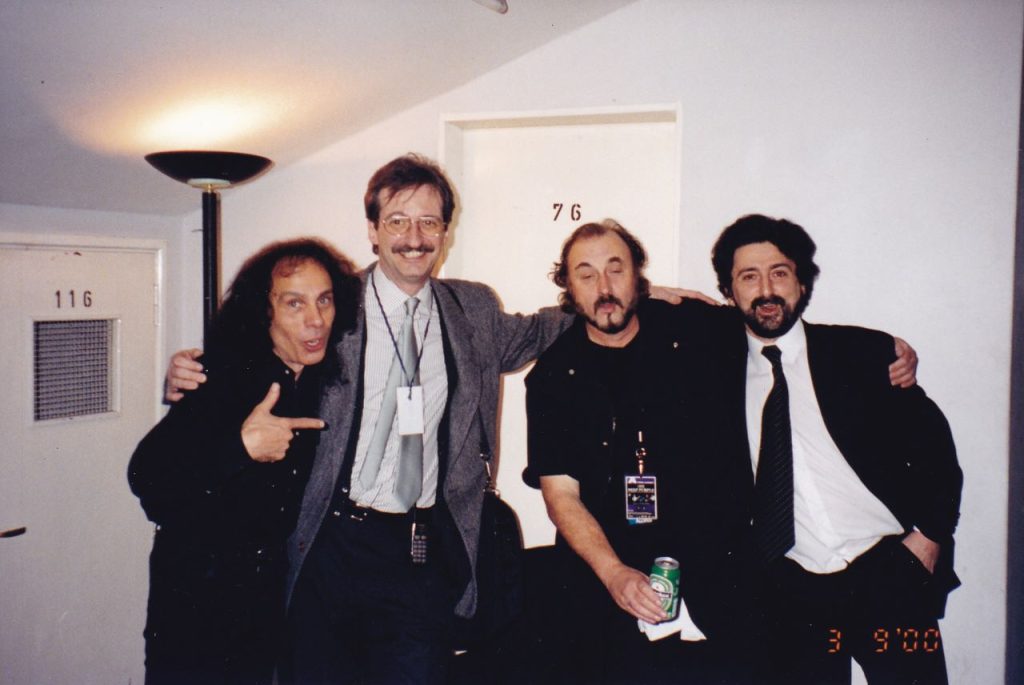
One of our Directors, Eduardo Ihidoype, next to Ronnie James Dio during the concert where he played with Deep Purple at the Luna Park (Buenos Aires, Argentina).

Discursos políticos, yo ni uno creo. / Vengo de Chile, del Chile feo, el verdadero
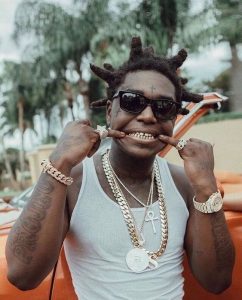
Hailing from Pompano Beach, Florida, Kodak Black has rapidly emerged as one of the most compelling voices in contemporary hip-hop. With his distinctive blend of gritty lyricism, melodic hooks, and raw authenticity, Kodak has captivated audiences around the world. His early mixtapes, including “Project Baby” and “Institution,” garnered widespread attention for their candid reflections on life in the streets and the struggles of coming of age in poverty-stricken neighborhoods.
Since his breakthrough, Kodak Black has continued to ascend to new heights, solidifying his status as a force to be reckoned with in the hip-hop landscape. His debut studio album “Painting Pictures” spawned hits like “Tunnel Vision” and “Patty Cake,” showcasing his versatility as both a rapper and a songwriter. Despite facing legal troubles and setbacks along the way, Kodak’s undeniable talent and unwavering determination have propelled him to the top of the charts and earned him a devoted fanbase.
He is a captivating figure whose music reflects the struggles and triumphs of his journey. With a new album on the horizon, it doesn’t matter if you’re vibing to his latest tracks or revisiting his early mixtapes, one thing is certain: Kodak Black’s star is on the rise, and the future looks brighter than ever.

In the vibrant landscape of Latin urban music, one artist has been making waves with his distinctive style and heartfelt lyrics: Papi Wilo. Hailing from Puerto Rico, he has rapidly gained recognition for his unique blend of Reggaeton, Hip-hop, R&B and Bachata. In 2012, with only 18 years, he jumped to first numbers of music with his “Freestyle #13”, now known as “Mi historia”.
After that, another milestone in his career was the release of his breakout single, “Sufriendo de Amor,” which garnered widespread attention for its raw and authentic portrayal of heartbreak. His lyrics, just like this one, often reflect the challenges faced by many, and show sincerity and vulnerability, making him a relatable figure for a diverse audience. Papi Wilo’s ability to infuse his music with has endeared him to fans, establishing him as a rising star in the Latin urban music scene.
As his career progresses, Papi Wilo is now established as a rising star in the Latin Urban music scene. From soulful ballads to energetic club bangers, he effortlessly navigates through various genres, showcasing his dynamic range as an artist. He recently released the single “Hijo”, part of his upcoming album “La Definición del Rap”.
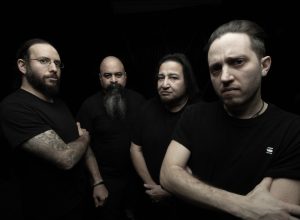
Fear Factory stands as a titanic force in the realm of industrial metal, wielding a sonic arsenal that marries pulverizing riffs with machine-like precision. Formed in Los Angeles in 1989, the band swiftly gained acclaim for their fusion of metal, electronic elements, and futuristic themes, carving out a unique niche in the heavy music landscape. Led by vocalist Burton C. Bell and guitarist Dino Cazares, Fear Factory’s music is characterized by its relentless aggression, haunting melodies, and dystopian lyrics that reflect on themes of man versus machine and the dehumanizing effects of technology.
Throughout their illustrious career, Fear Factory has released a string of influential albums that have left an indelible mark on the metal genre. From their groundbreaking debut “Soul of a New Machine” to the genre-defining “Demanufacture” and the ambitious “Obsolete,” each release showcases the band’s unwavering commitment to innovation and sonic exploration. Tracks like “Replica,” “Edgecrusher,” and “Martyr” have become anthems for legions of fans worldwide, solidifying Fear Factory’s status as one of the most iconic bands in metal history.
Despite lineup changes and internal strife over the years, Fear Factory’s legacy remains untarnished, with their influence continuing to reverberate through the metal community. With a new album on the horizon and a catalog filled with timeless classics, Fear Factory stands as a testament to the enduring power of heavy music and the boundless creativity of the human spirit. As they continue to push the boundaries of sonic experimentation, Fear Factory remains a beacon of innovation in a genre known for its intensity and aggression.
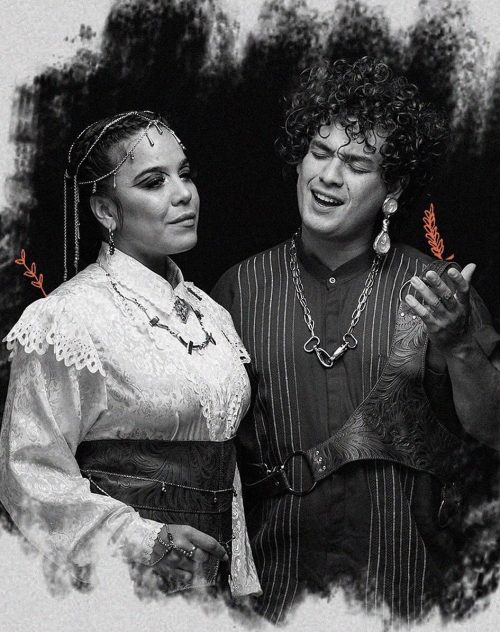
This Paraguayan duo, formed by Jennifer Hicks and Miguel Narváez, combines Latin American folklore with international rhythms such as Jazz, Blues and Soul.
The name also links these aspects: Purahéi means singing in Guarani and Soul refers to African-American sounds and the word Alma in English.
In 2018 they presented their album Swing Guaraní, which contains songs in Spanish, English and Guaraní. The album has been a great success that took them on tour through 19 cities in Paraguay, and then through Latin America and Europe.